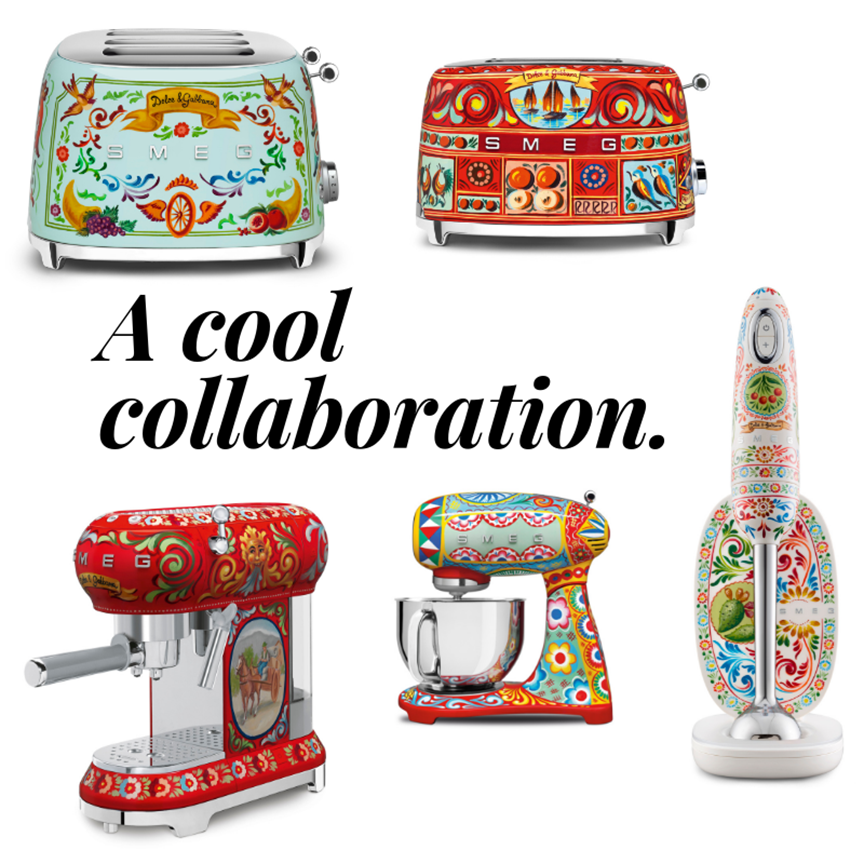A home inspired by art and designed to showcase master works becomes a work of art in itself.
Upscale properties are often conceived to showcase art, but it’s rare to find an estate comparable to the villa featured on our cover. Known as The Chow Residence, the home was built by the legendary restaurateur Michael Cho and Eva Chow. It reflects their passion for art. Not only is it designed to display an exceptional collection, but it could also be considered a work of art itself. Like all masterpieces, this property is the result of seven years of careful curation and construction.
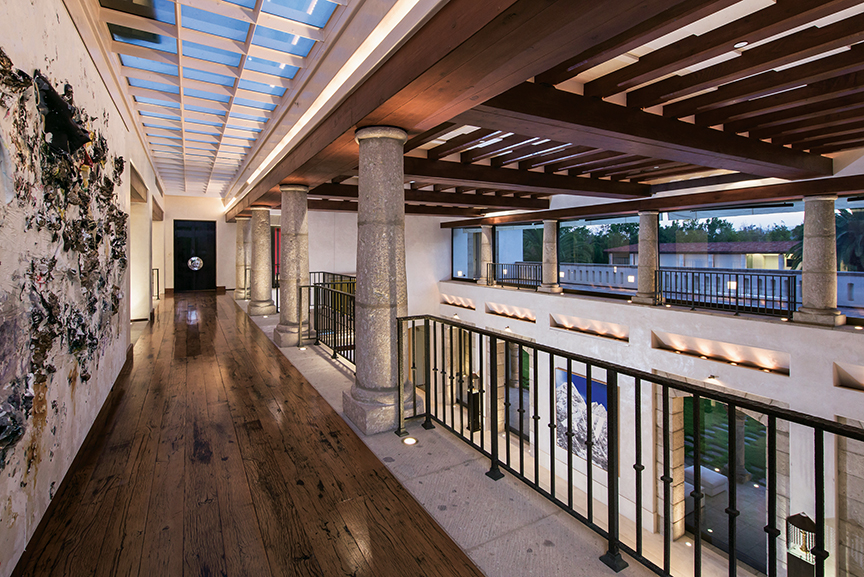
For inspiration, the owners looked to the Reina Sofía museum in Madrid, the curved ceilings at the Pradro, the Lanvin atelier in Paris and the elevators at the Hermés, eventually hiring Mexican architect Humberto Arigas to bring their vision to fruition. Here Spanish architecture, Art Deco, Venetian influences, contemporary art and Chinese antiquities happily mix with 400-year-old Moorish columns and 18th century Florentine ceilings in a diverse palette that seems ideally suited to the magnitude of the structure. The centerpiece is a dramatic two-story, 30-foot tall atrium from which rooms on two levels branch out.
The lower level is devoted to collections and amusements, including space for a collection of vintage cars, extensive wine storage and an underground theater.
Museum quality rooms are only one quality that makes this property exceptional. The location is the best street in the city. “Mapleton Drive is as good as it gets,” says Jeff Hyland, who along with his partner Rick Hilton, is marketing the estate. It is also one of the very few sites in Holmby Hills offering a view of downtown Los Angeles. A rooftop deck is oriented for these premium views, and the addition of a kitchen and a bar make it ideal for entertaining. “You can have 100 people up there,” Hyland adds. Hilton & Hyland is offering the property at $78 million.
Architectural tours are gaining popularity as designers revamp historic sites with fresh perspectives and classic details.

Photo by Eirik Johnson
The Glass House found in New Canaan, Connecticut, is an architectural icon and offers ideal tours for families, architecture and nature lovers, and more. The stunning grounds and architectural wonders make for an intriguing visit full of history.
The Glass House is one of 14 structures that can be found on the 49-acre site of the National Trust for Historic Preservation in New Canaan, Connecticut. The structure dates back to 1949 and has since been restored to near pristine condition. Described as a pavilion, best used for observing the surrounding landscape, the structure’s walls are made mostly from glass. The house is 55 feet long and 33 feet wide, with 1,815 square feet.



Photos by Michael Biondo
According to The Glass House website, “Philip Johnson, who lived in the Glass House from 1949 until his death in 2005, conceived of it as half a composition, completed by the Brick House. Both buildings were designed in 1945-48.” The Brick House was completed just prior to The Glass House and sharply contrasts the near-unobstructed views by being almost totally encased by brick.

Photo by Eirik Johnson
Other structures on site include the Da Monsta, Studio, Painting Gallery, Pavilion in the Pond, Sculpture Gallery, the Ghost House, and more.


Photos by Michael Biondo
Three tours are offered. Find the one that works for you!
Glass House Tour – One hour
- Tour the glass house and promontory
- Minimal walking
- Concise and enjoyable
Glass House and Galleries Tour – Two Hours
- The most popular
- ¾ mile of walking
- Visit the Glass House, Painting Gallery, Sculpture Gallery, outdoor sculpture, and Da Monsta
Glass House Extended Tour – Two and a Half Hours

Photo by Michael Biondo
Transforming the already luxurious grand piano into a genuine work of art requires both imagination and respect for centuries-old traditions.
Few possessions are as classic and exquisite as a grand piano, an accessory that complements an elegant residence as naturally as a tuxedo suits James Bond. Even if rarely played, that timeless piece of functional art makes a profound statement about the homeowner’s style and sophistication. And like yachts or haute couture, a grand piano can be customized to indulge the most extravagant tastes.
Meticulously handcrafted in Queens, New York or Hamburg, Germany, every Steinway & Sons piano is a masterpiece. The company’s defiant adherence to Old World craftsmanship — each grand piano takes up to a year to build — is rare in an era when manufacturers are rewarded for automation, cost-control and uniformity. Even a standard-issue Steinway grand is impressive, but the company’s collaboration with renowned artists and designers elevates the product to another level altogether.
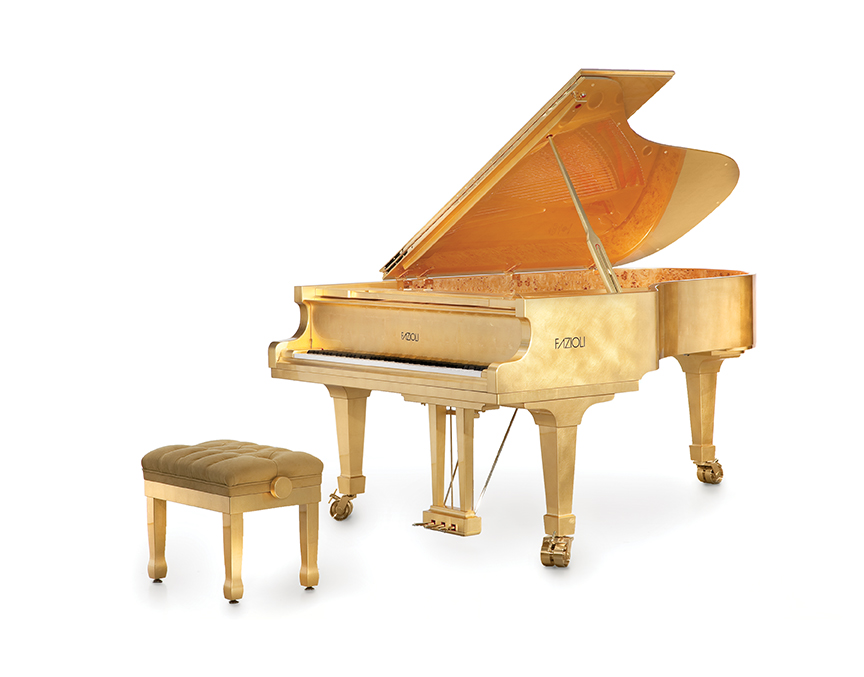
GOLD LEAF by Fazioli. 24-carat gold leaf completely covers this F228 piano model, giving it a touch of royal prestige. The transparent polyester that protects the gold leaf gives the surface a precious luminosity of iridescent shades.
Photo courtesy of Fazioli/Roberto Zava-Studio Step.
In addition to accommodating an exclusive clientele seeking something completely unique and willing to pay a premium for it, Steinway appreciates the excitement its exclusive art case pianos generate among a broader audience. “A very cool and unique limited edition that garners some press also brings attention to Steinway & Sons as a whole,” explains Director of Product Management Robert Polan, who oversees the company’s custom piano program worldwide.
“A lot of care is taken to find partners that are compatible with Steinway’s mission and principles,” says Polan, citing frequent musical associations like the “Imagine” John Lennon limited edition. “In other cases, the connection is more along the lines of a company with a similar dedication to craftsmanship and quality — a great example being what we’ve done with Lalique,” he says. Polan reports some partnerships are forged to commemorate a Steinway milestone, such as a collaboration with designer Frank Pollaro for “The Fibonacci,” which celebrated the company’s 600,000th piano in 2015, priced at $2.4 million.
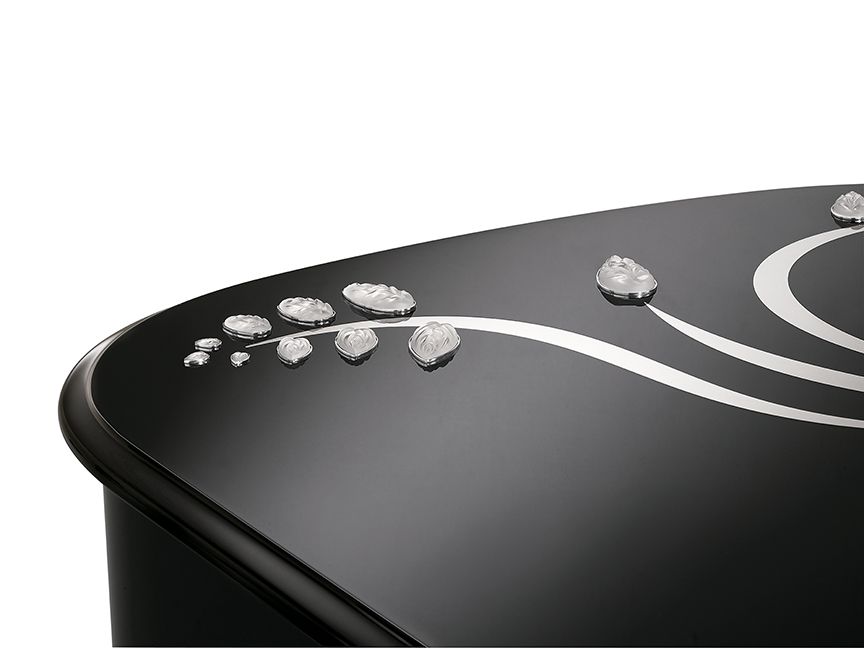
THE HELICONIA Designed by Lalique. Originally designed in 1992 by Marie-Claude Lalique — the granddaughter of René Lalique — the heliconia flower forms the perfect decor for these fine instruments. Lovingly crafted at the Lalique manufactory in Alsace, 75 crystals make the instrument shine, while silver-colored inlays are decoratively arranged into the design creating interesting reflections as well as a sense of clarity.
Photo courtesy of Steinway & Sons.
Like Steinway, Baldi Home Jewels has been creating luxury goods for more than 150 years, and the company’s use of semiprecious gems and 24-karat gold redefines home furnishings like bath fixtures or tableware. The Florence, Italy-based firm partnered with Steinway to create “Armonia Limited Edition by Baldi,” in which the cases, lids, music stands and legs of glossy ebonized pianos are embellished with Italian Renaissance ornamentation. Decorative bronze elements are hand-chiseled to perfection — an exacting process consistent with Steinway’s own commitment to craftsmanship — and plated in precious metals with a choice of nine different patinas.
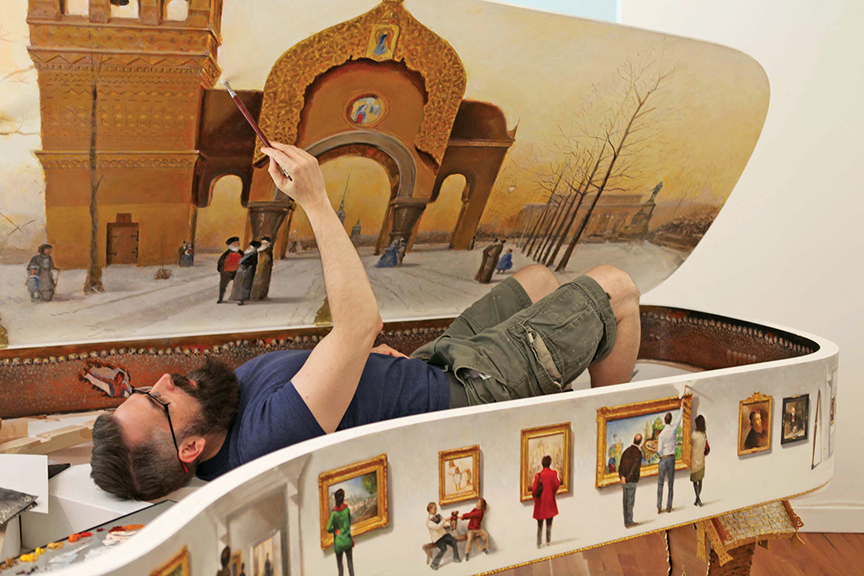
PICTURES AT AN EXHIBITION. Painted by Paul Wyse for Steinway & Sons. Photos courtesy of Steinway & Sons.
Steinway’s “Heliconia,” the product of a partnership with Lalique, is a black or white grand piano adorned with 75 jewel-like pieces of the renowned French glassmaker’s signature frosted crystal.
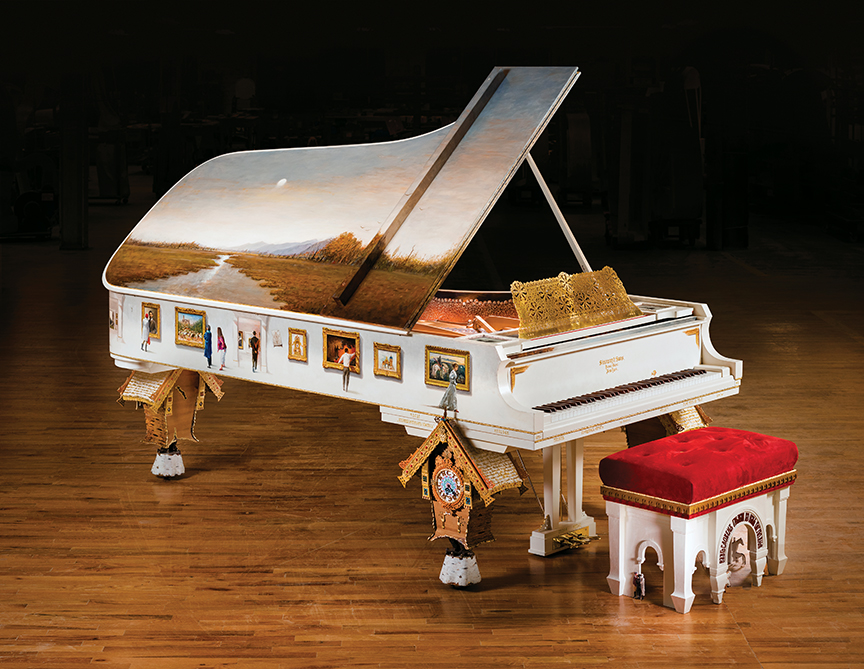
Created from a design by Marie-Claude Lalique (granddaughter of founder René Lalique), the result is a stunning, understated marriage of two great artisanal legacies. “Lalique is a company with a very similar history and tradition of craftsmanship, so as ‘kindred spirit’ companies, this partnership made sense on many levels,” says Steinway’s Polan.
Gene Korolev, who learned the art of piano refurbishment in Russia’s cultured city of Saint Petersburg, reimagines Steinway grand pianos with his daughter, Katherine Banyasz. With his 40-plus years of piano experience and her background in interior and graphic design, their Piano Solutions XXI creates glamorous, over-the-top instruments from a studio in suburban Los Angeles.
The Piano Solutions principals are quick to distance themselves from the ostentatious rhinestone-clad showpieces Liberace made famous. “I like to tell a story, not just slap some patterns onto a piano case,” explains Banyasz, who reports her father’s craftsmanship is an appealing antidote to the prevailing culture of mass production. An early work paid tribute to French fashion designer Coco Chanel, an Art Deco design in which nearly 50,000 cubic zirconia crystals tell Madame Chanel’s story, with her silhouette appearing inside the lid.
When the Chanel piano sold for $250,000, the father-and-daughter entrepreneurs recognized the demand for elaborate, finely-crafted art case pianos. “Anybody who appreciates art, wants something unique to pass from generation to generation, or who finds meaning in the themes,” is how Banyasz characterizes the company’s exclusive clientele.
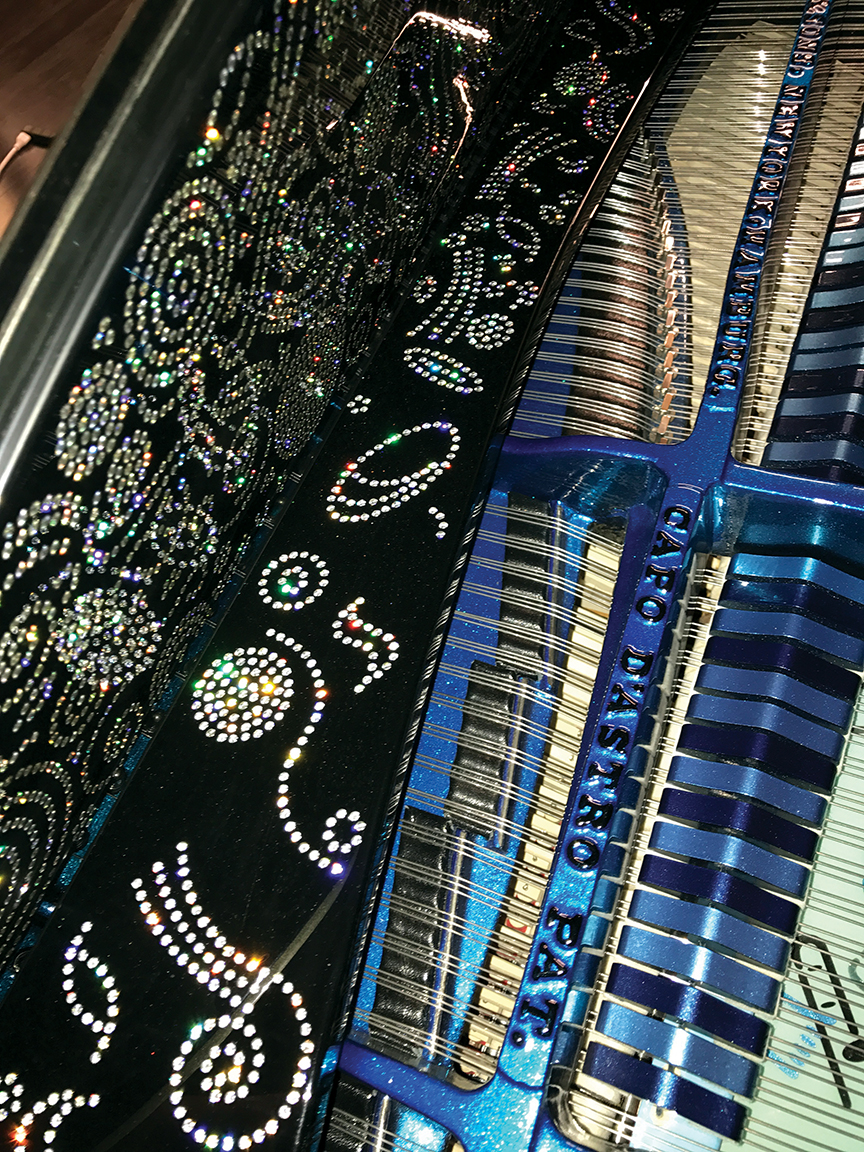
NEW YORK SERENADE by PIANO SOLUTIONS XXI. Photos courtesy of Piano Solutions XXI.
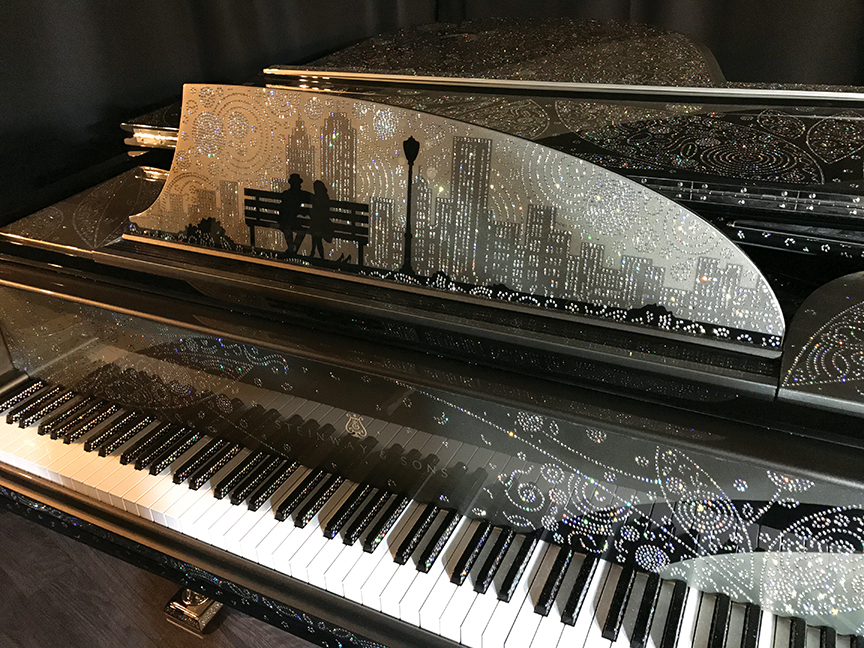
Piano Solutions XXI’s “New York Serenade” is a Steinway grand enveloped with images of Manhattan landmarks created through the application of about 165,000 cubic zirconia crystals. Its music rack features a couple seated on a park bench viewing the skyline and the entire composition represents a love letter to the Big Apple. A total of 2,880 crystals were affixed to the sides of the piano’s 36 black keys, which Korolev remembers consuming many of the 3,000 hours of labor invested in this project. New York Serenade is on the market for $1.5 million and Banyasz believes a luxury Manhattan hotel would be a natural buyer.
Fazioli was founded in Italy 130 years after Steinway but produces among the most coveted instruments in the world, and serious musicians dominate its clientele. Only about 100 are handcrafted annually at its factory near Venice, and admirers suggest playing a Fazioli is the musical equivalent of racing a Ferrari. Founder Paolo Fazioli insists that the drive to explore new techniques and aesthetics is embedded in his company’s DNA. “This is our life, experiments. You can increase quality and do a good job, but only if you continually experiment,” he says.
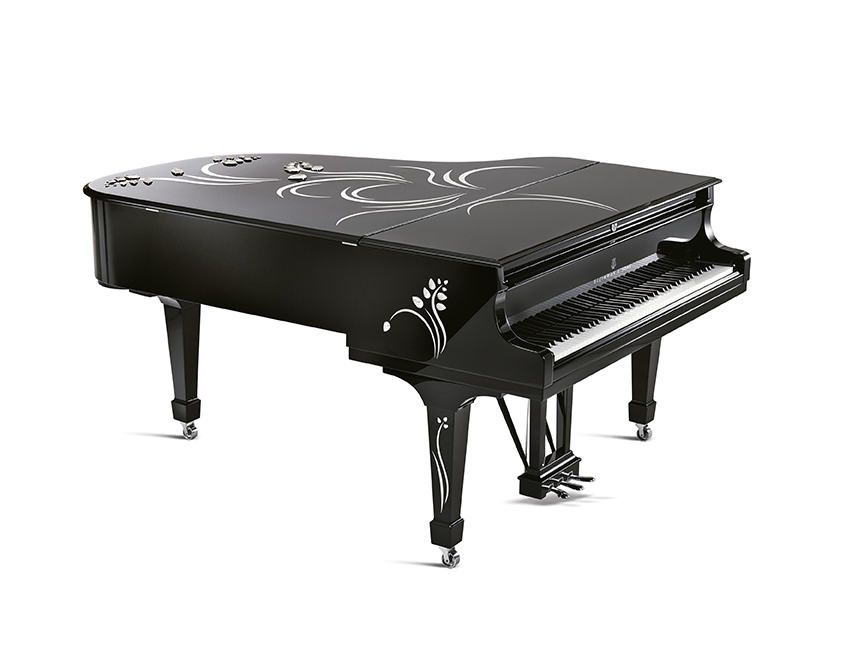
THE HELICONIA Designed by Lalique
Photo courtesy of Steinway & Sons.
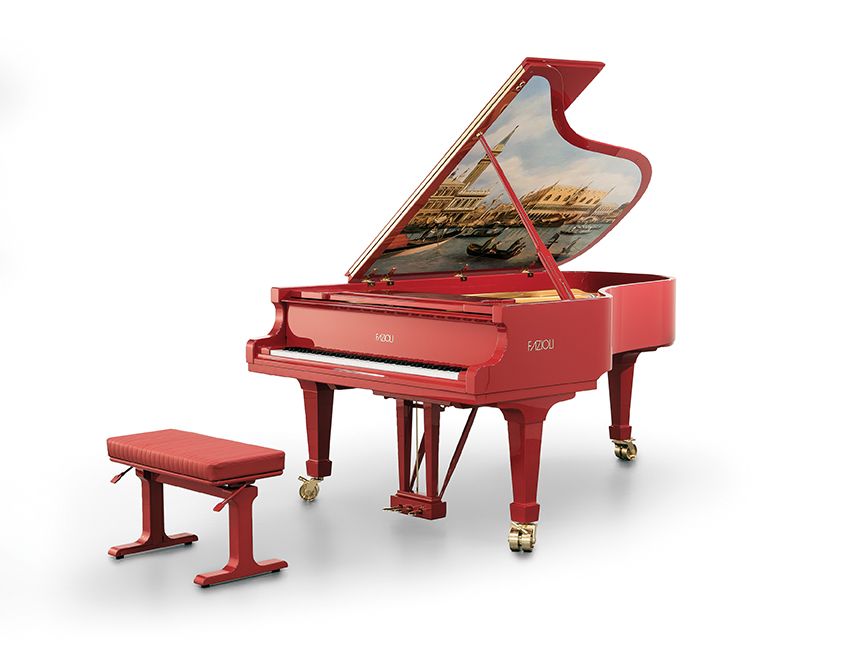
MARCO POLO By Fazioli
Photo courtesy of Fazioli/Roberto Zava-Studio Step.
Among Fazioli’s experimental art case models is a grand piano entirely clad in 24-karat gold leaf, the ethereal “Butterfly” designed by architect Bing Thom, and the high-gloss red “Marco Polo,” originally commissioned by a client from China. The crimson instrument’s inside lid features a reproduction of an ornate Canaletto painting that celebrates the ancient connection between Venice and China
Showstopping Pianos
Fazioli: www.fazioli.com
Piano Solutions XXI: www.pianosxxi.com
Steinway & Sons: www.steinway.com
Collaborators
Baldi Home Jewels: www.baldihomejewels.com
Lalique: www.lalique.com
Artist, illustrator, and cartographer at Cornelia Carpenter Studio
Cherish your travels, trips, adventures and more with these hand-crafted, custom maps and illustrations. Each map is unique and individually designed based on your experiences.
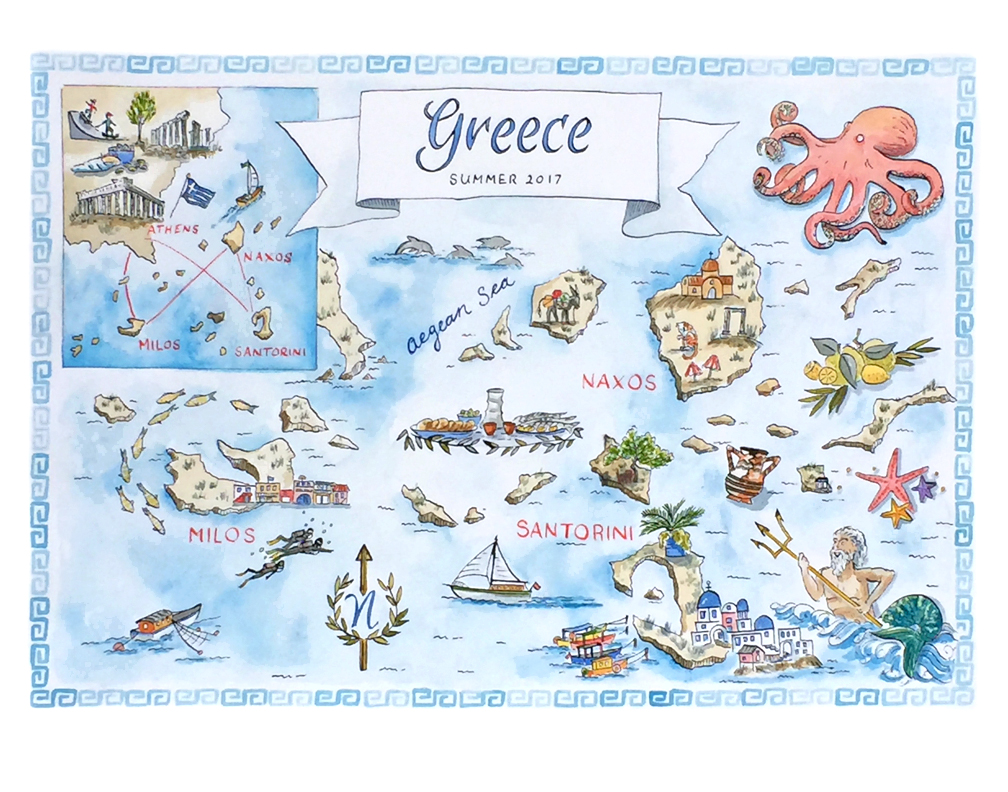
This is a unique idea, how did you come up with it? What is the inspiration behind your company?
I have always loved maps. They are a wonderful way to explore the world, and for me evoke a sense of adventure and wonder. I created my first illustrated map while studying abroad in Nicaragua as an undergraduate student. I majored in Geography and Studio Art, so this was a natural blend of my two interests. Since then, I have created custom illustrated maps of countries around the world. The most rewarding part of my job is the excitement of my clients when they receive the final map documenting their special and unique adventures.
What are some of the biggest challenges when creating these products?
Getting my work out there! I have relied on word-of-mouth and social media to get my work out into the world, and I’m beginning to feel like my presence is growing. In addition, I am committed to accuracy and sometimes the research can be quite time-consuming. For example, I will spend hours studying a particular building or the cuisine of an area down to the traditional serveware and drinking glasses. I’m all about making my maps look and feel as authentic as possible!
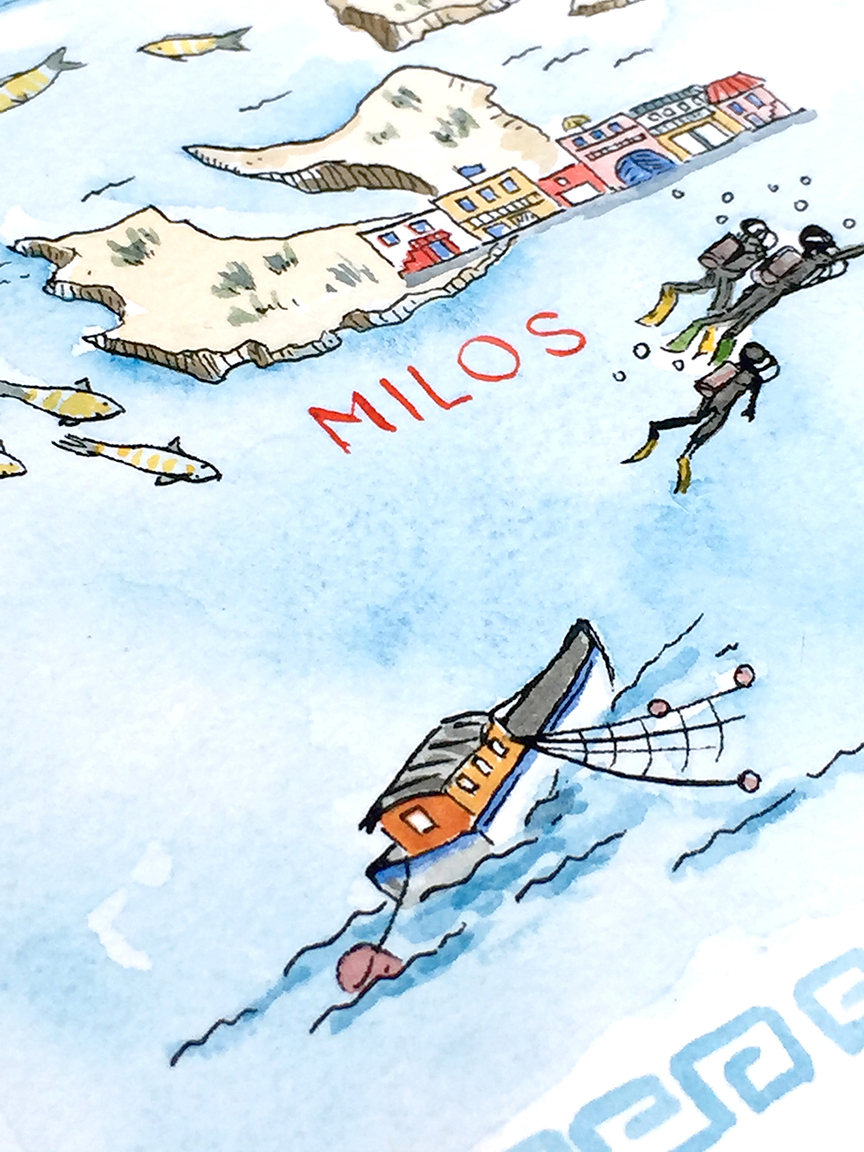
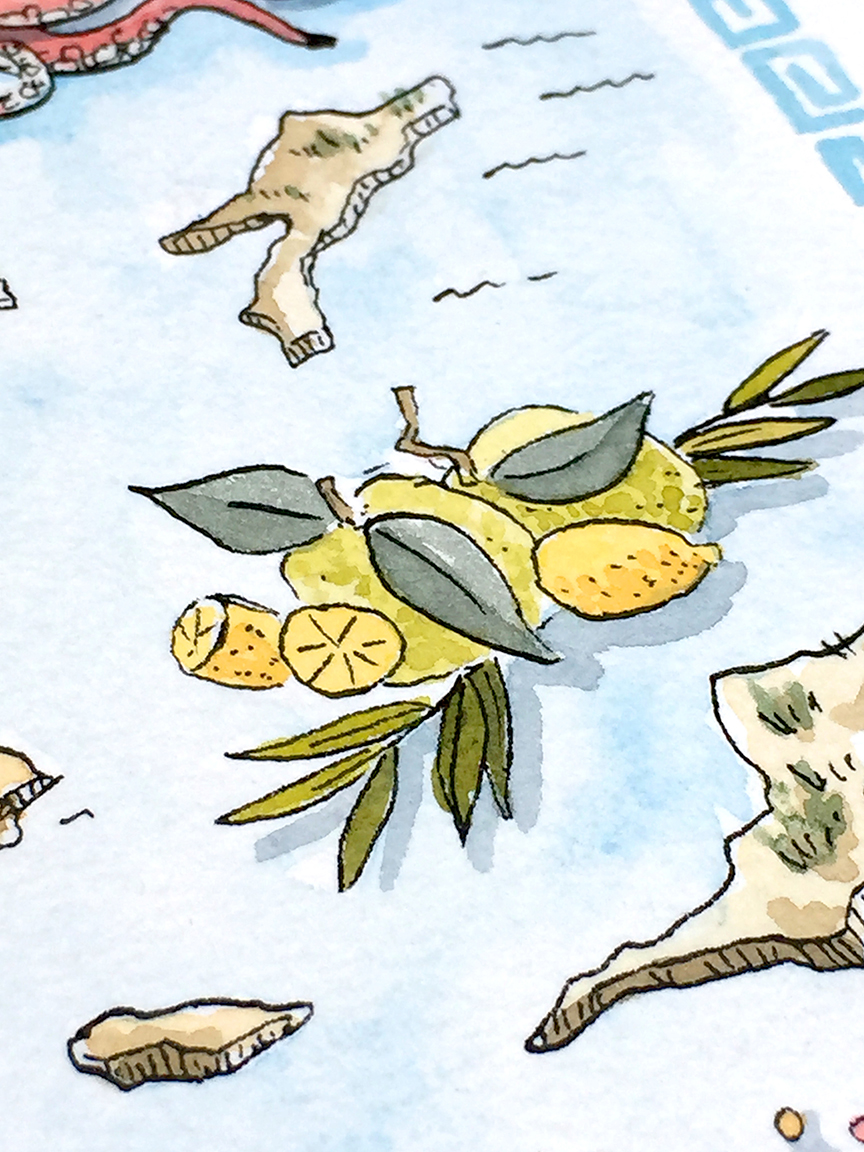
What is your favorite step of the process when creating maps?
I love working with people and learning about their adventures. When I create a personal map I ask for photos, personal stories, inside jokes, favorite foods, and random events that make each place special. Some of the trips are truly awesome and it’s quite fun to study exotic corners of the world that I otherwise would not know about.
Please explain why your company stands out among others?
Maps are very “in” right now and there is a growing competitive market, but I strive on the details of my work. I make maps so my clients can revisit their favorite places. As a lifelong student of geography, accuracy is so important to me. Although my illustrated maps can’t always be physically exact, I always make sure landmarks, locations, and the topography are placed thoughtfully. The same goes for buildings, food, flora, fauna, activities, and the culture of each place. I like to think my maps have an extra bit of attention and love.
What kind of customers do you expect to buy your products?
I think everyone needs a custom map. Whether it’s of your neighborhood or far-away adventures, maps have the ability to spark conversation and evoke curiosity. I create mini-maps that are 5” x 5” to massive worldwide adventure maps. To me, maps are the perfect way to document the things that make life special and are worth remembering and smiling about. It doesn’t matter if it’s an everyday occurrence or a once-in-a-lifetime experience, maps are the perfect way to display life.
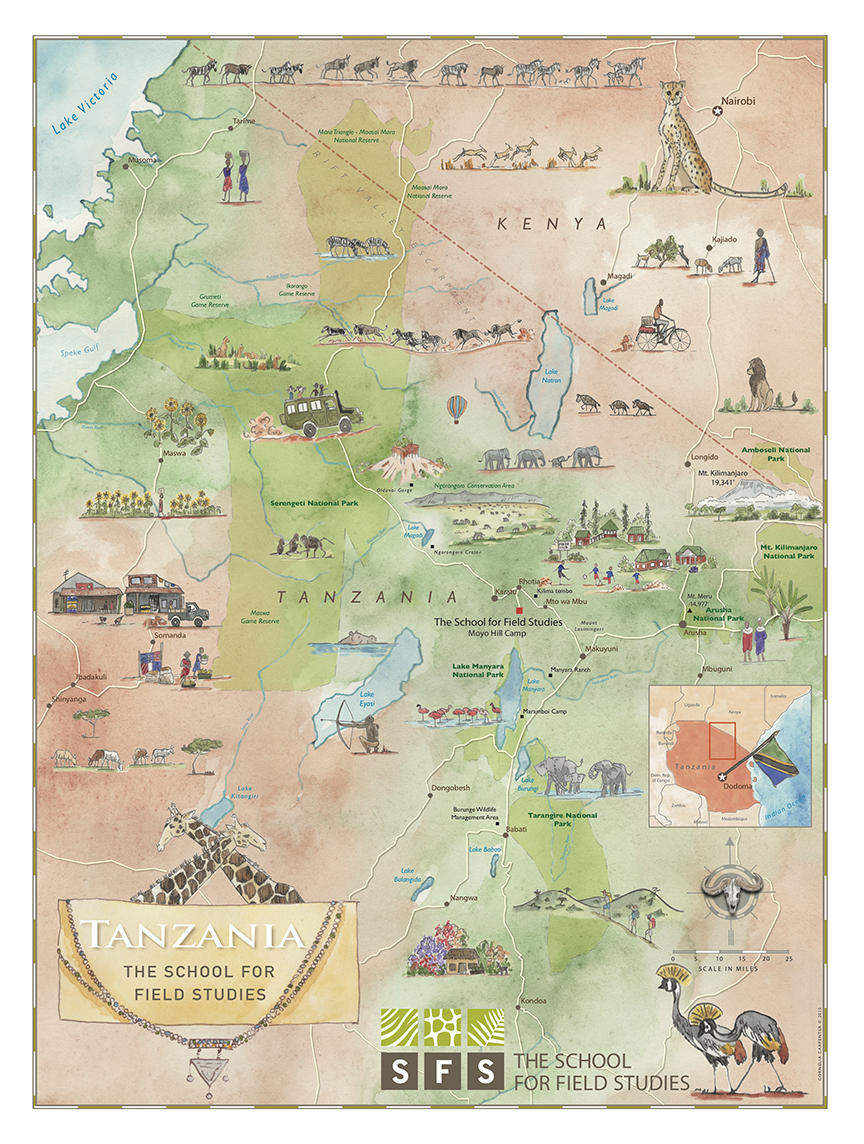
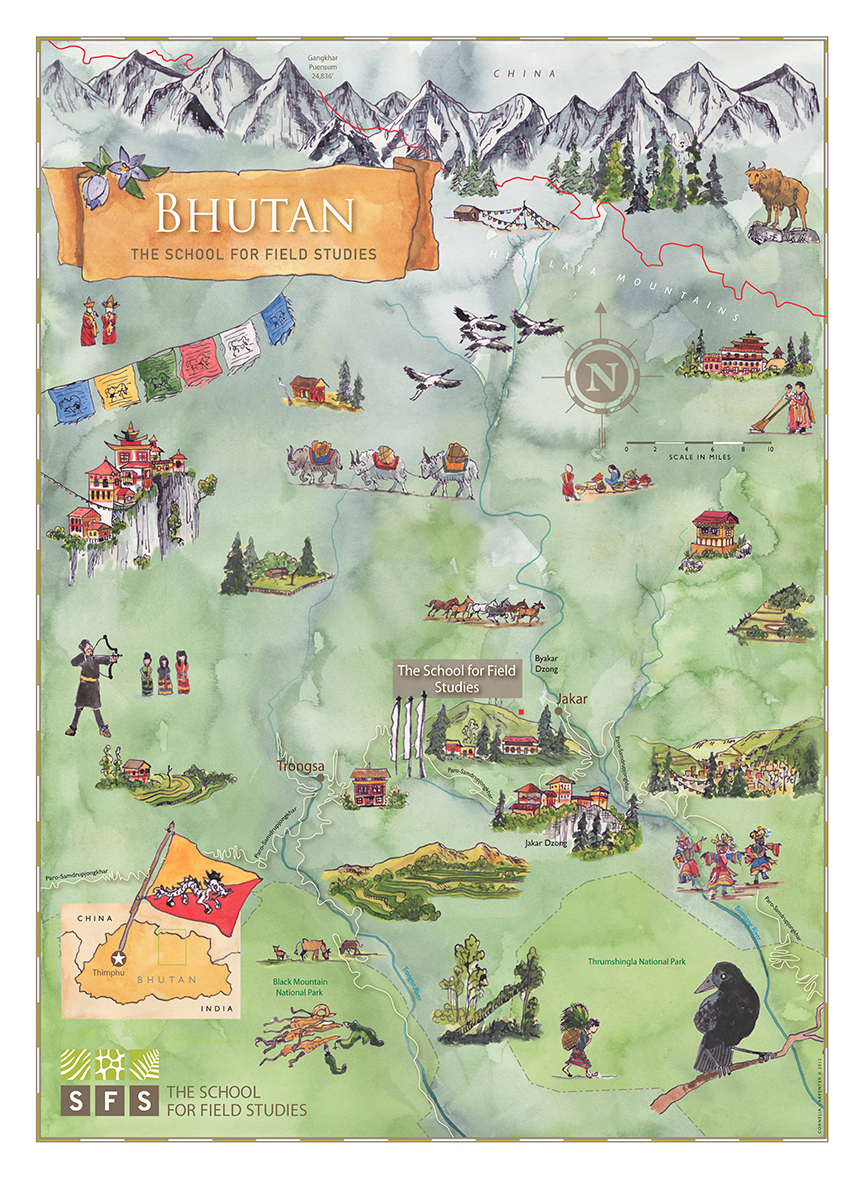
How is your business different from your original expectations?
Last year I decided to go all in, but before that creating maps were a side gig. Because my business is still so young, I’m not sure what to expect. Ultimately, I hope that people find joy in my work and they can relive their happy memories through these maps.
Do you have plans/hopes to expand your company?
Yes! If I could imagine the perfect job, it would be making maps every day, all day. I do offer custom illustrated wedding invitations (including maps), personalized travel maps, and other illustrated projects. Right now, I am focused on offering unique one-of-a-kind products.
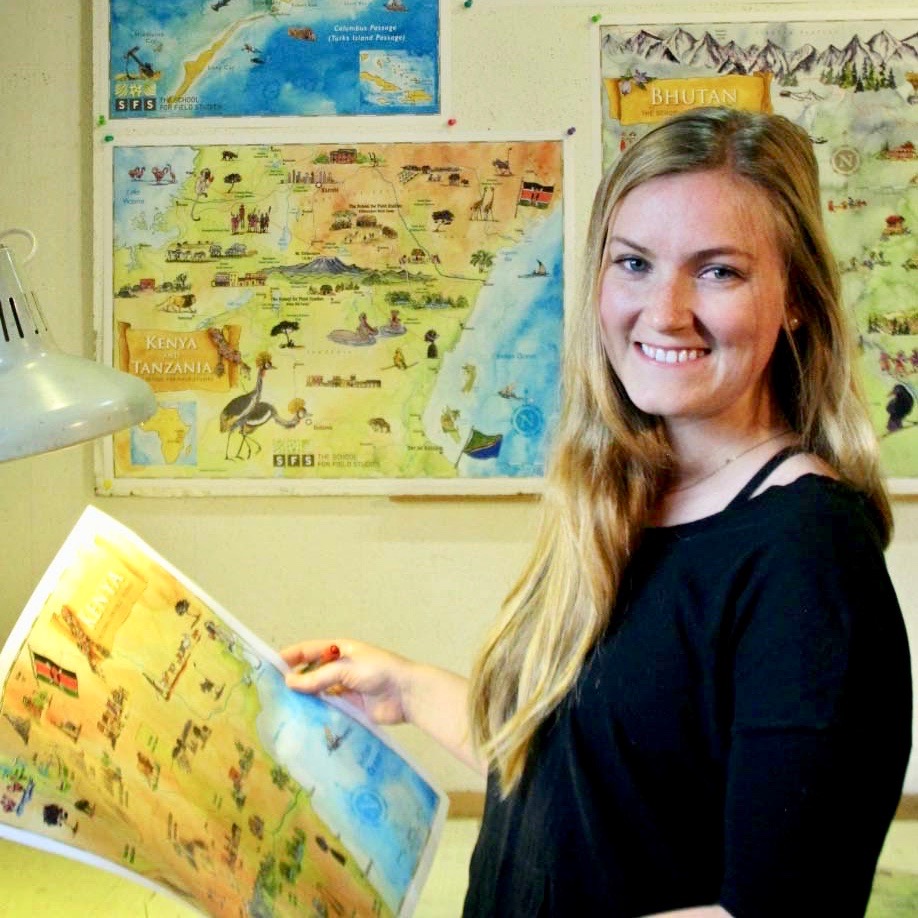
Photos courtesy of Cornelia Carpenter Studio 2019. Find more at www.CorneliaCarpenter.com or on Instagram @CorneliaCarpenter_Studio

Artemest is well-known for its dedication to hand-crafted designs and luxury products. The collections are carefully chosen for their quality and the company works closely with various artists and designers in many different regions around Italy to maintain the highest standards. Artemest and TED Milano working together are bound to impress.
For the first time, Artemest is fully designing a home from start to finish. This will include the home’s range of lighting, stunning decor, and furniture for every room that has been crafted by talented expert Italian artisans and designers. This project is creating spaces and images of contemporary living. Unique immersive experiences are the result.
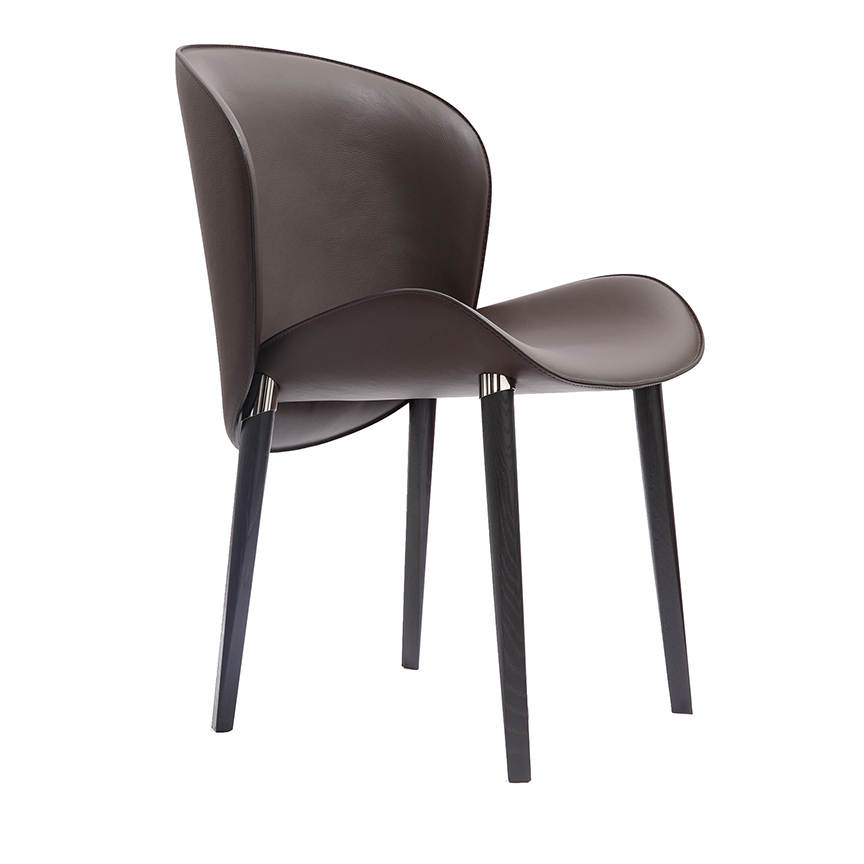
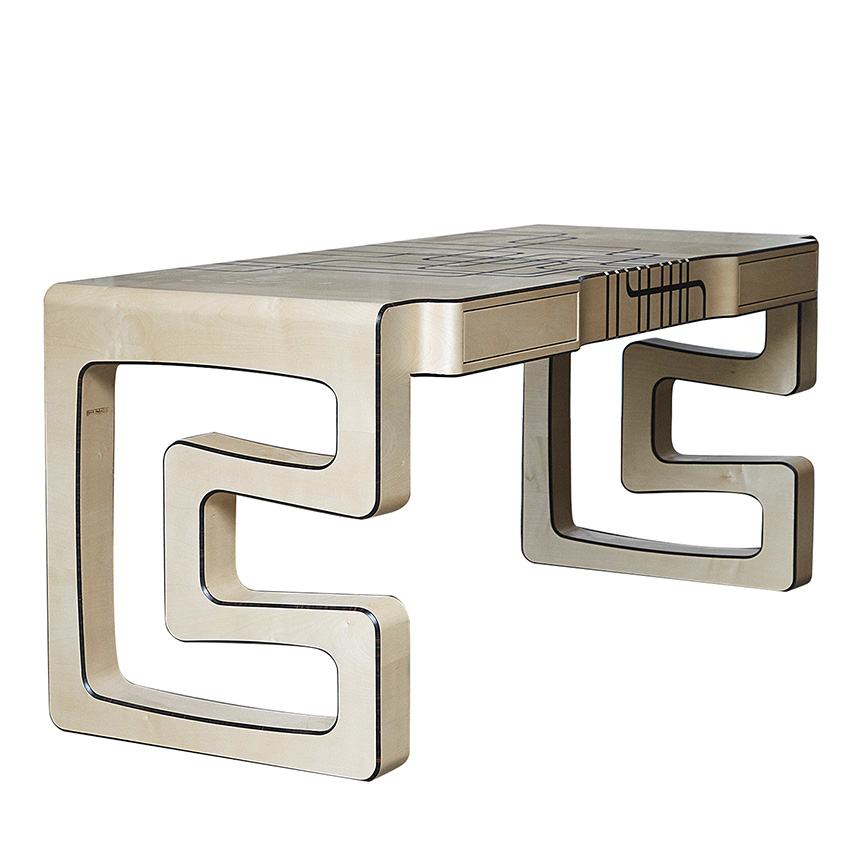
Living Objects is about bringing life into a space or home. Each piece of furniture and décor has a soul, which will be revealed through the poetry of their movements, infusing life into the house with a series of performances. “This year we have chosen to create an immersive experience that mixes design, art, music, and theater with a touch of technology. As international ambassadors of Made in Italy, it is our mission to provide as many tools as possible to promote the uncompromising quality of which our country is a world leader,” according to Marco Credendino, Artemest Co-Founder and CEO.
The furniture has a unique fluidity to them. The mixture of lines that are rarely simple and the variety of textures will urge guests to explore the items more closely. From the Mosaic Dresser and Synchronicity Desk to the Julep Sofa, your senses will awaken.
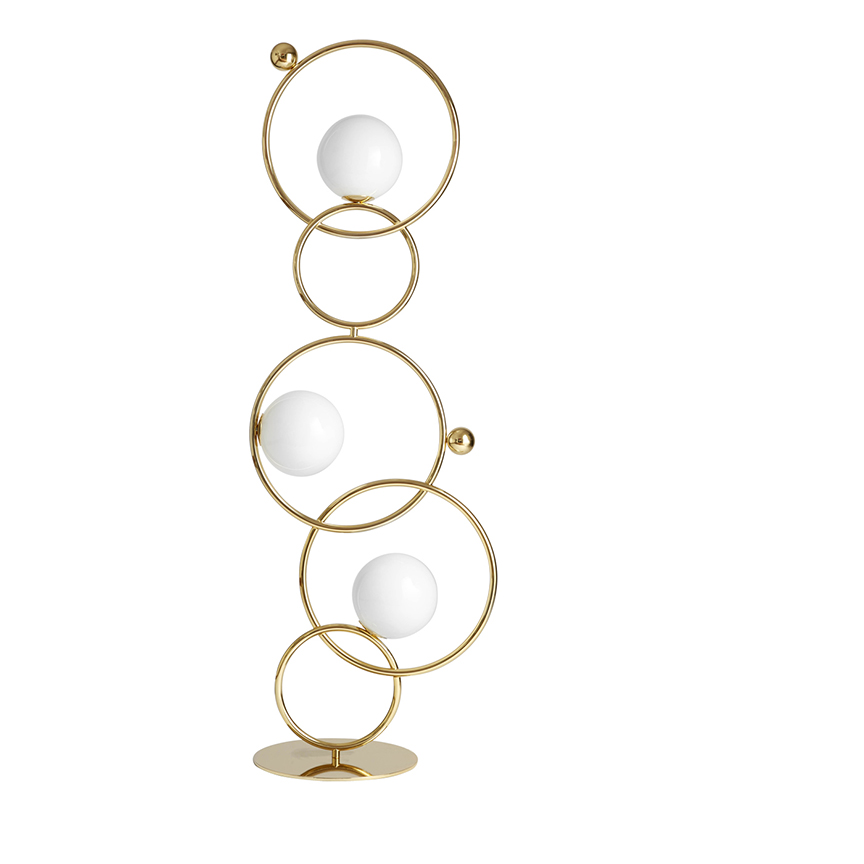
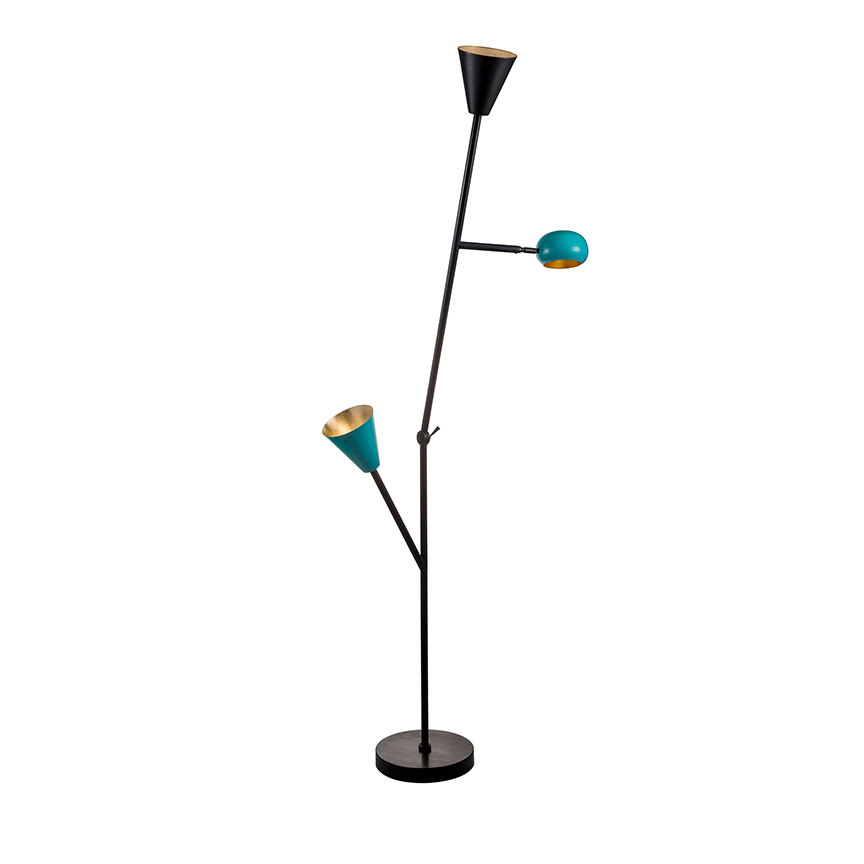
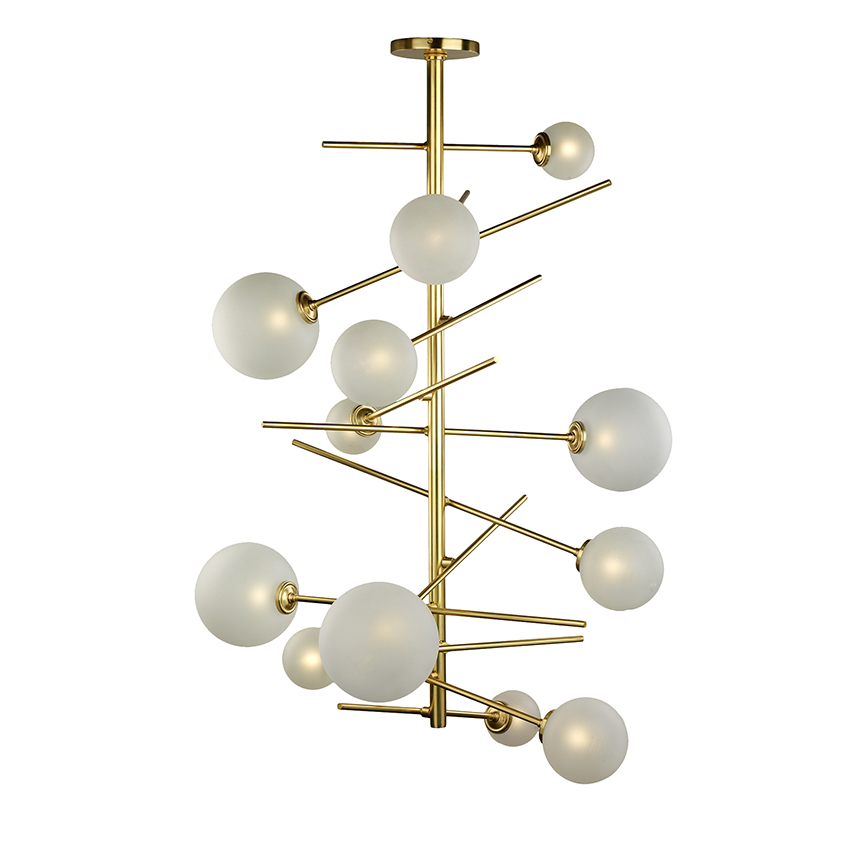
Each piece stands out on its own but they have been expertly paired and arranged to achieve a truly unforgettable home.
Living Objects will take place in Via Giovanni Randaccio 5, in a splendid 1930s villa on two floors, located in one of Milan’s most elegant residential areas.
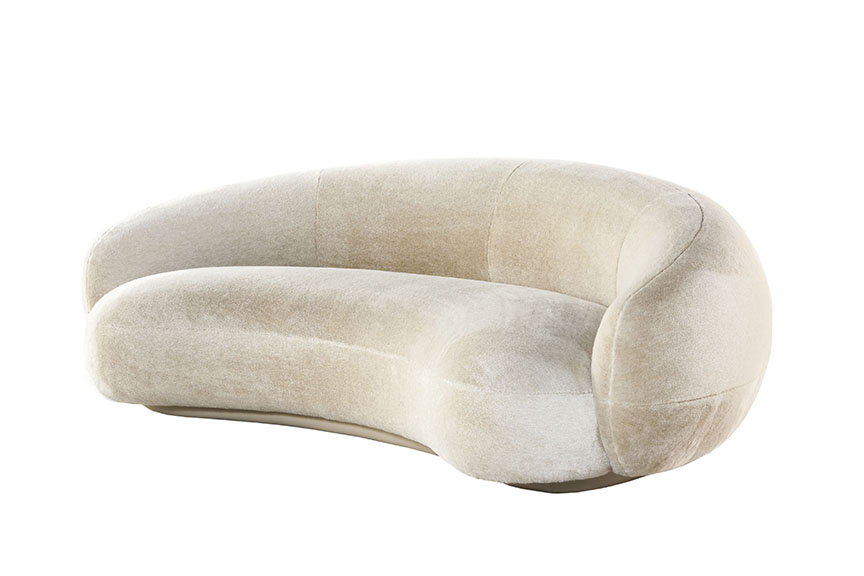
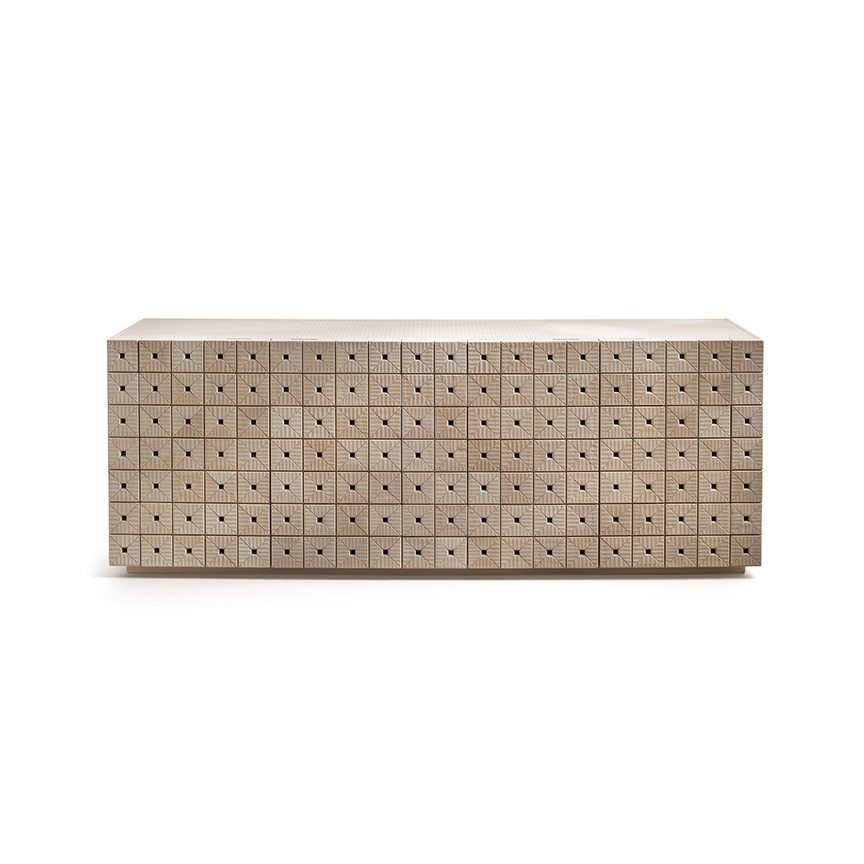
Images courtesy of ARTEMEST. Photos by Matteo Iotti.
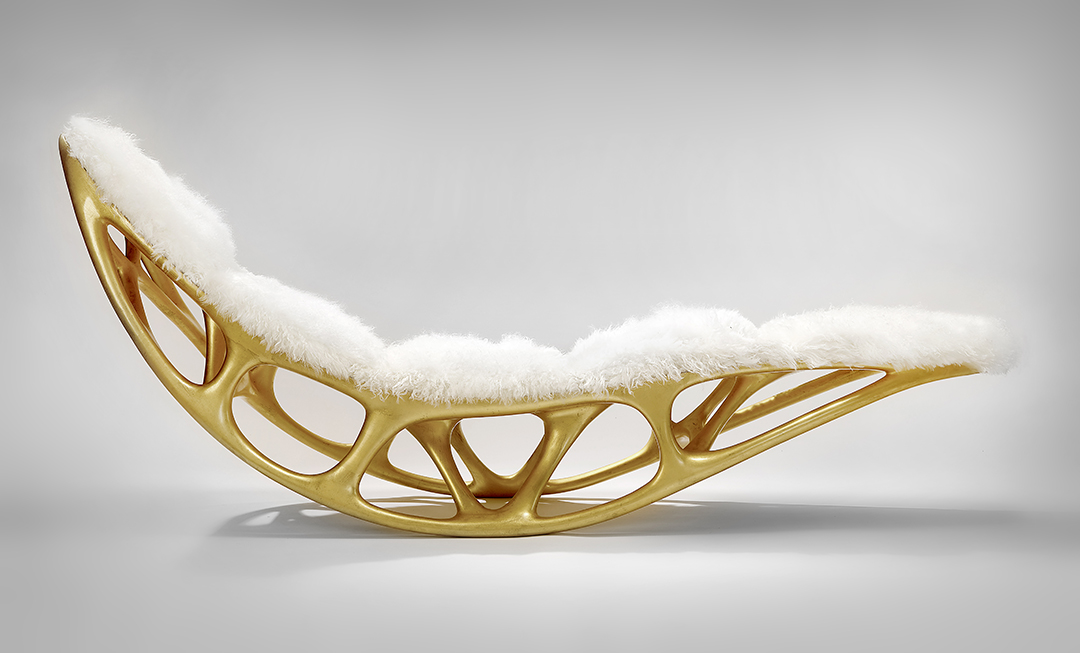
Being trained originally as an architect in Germany and London and having worked with one of the most iconic architects of the 20th century, Zaha Hadid, designer Timothy Schreiber reached what he calls “the center of the universe” in terms of digital design and technology very early on in his career. Though highly driven by today’s advancements in digital technology, Schreiber discusses how his designs are actually the outcome of a wide assortment of influences, even more traditional practices such as cabinet making and woodworking.
What about this particular version of design is most attractive to you, and to others?
I always like a new challenge and trying something completely new that nobody has done before and I hope others will also enjoy the freshness and new-craft aspect of my work.
Where would you draw inspiration from?
For me personally, I can draw inspiration from any beautiful moment.
When I walk through Kyoto I might have some great ideas by looking at the beautifully dressed locals and the amazing scenery and traditional architecture.
When I see the sunset behind the Diamond Head in Hawaii while swimming in the pacific I might have some new amazing ideas for colors, moods or shapes.
While I am walking up Montmartre in Paris some great eclectic ideas might come up while I stroll a secondhand market and see a broad mix of items from different eras like Beaux Arts, Art Deco or Art Nouveau.
How do you think the presence of digital tools/technology has changed design over the past few decades? How do you use these tools in your own work?
Whilst in the design department of Zaha Hadid, I realized that, although the latest digital design tools might be used there, without a fundamental understanding of traditional craft it’s actually extremely difficult to achieve perfection in object or furniture design. … I am hoping I can push the symbiosis of traditional and digital design and making process to the next level. However, the most important aspect of my work will always be the focus on traditional craft.
What do you think you try to achieve through your collection/these pieces, i.e. what is the goal when it comes to your work?
I am aiming to push the boundaries in terms of what is possible and in terms of what hasn’t been done before, whilst combining new and old crafts. I like to work in many different materials, metal, glass, wood, fur, etc.
Sometimes, during my travels I find interesting traditional crafts and technologies. For example while I was living in China I got introduced to traditional Chinese Glass casting. The projects that were done with this technology were mainly traditional glass statues and figurines… After a lengthy process of experiments and tests we were able to push the boundaries here and make a piece of cast glass furniture which was almost twice the size that any other object that was previously cast there.
What do you think are some key things to remember when outfitting a home?
God is in the details.
Does your mind focus on a specific space in a home or space when you design, or on something else?
I was trained in multiple disciplines, cabinet making, architecture and interior design. My first 3 years in architecture college I spent at Bauhaus University in Germany. … I like to always focus on all spaces and all aspects of the design, from concept to detail, and I equally enjoy dealing with all spaces and aspects of the current job.
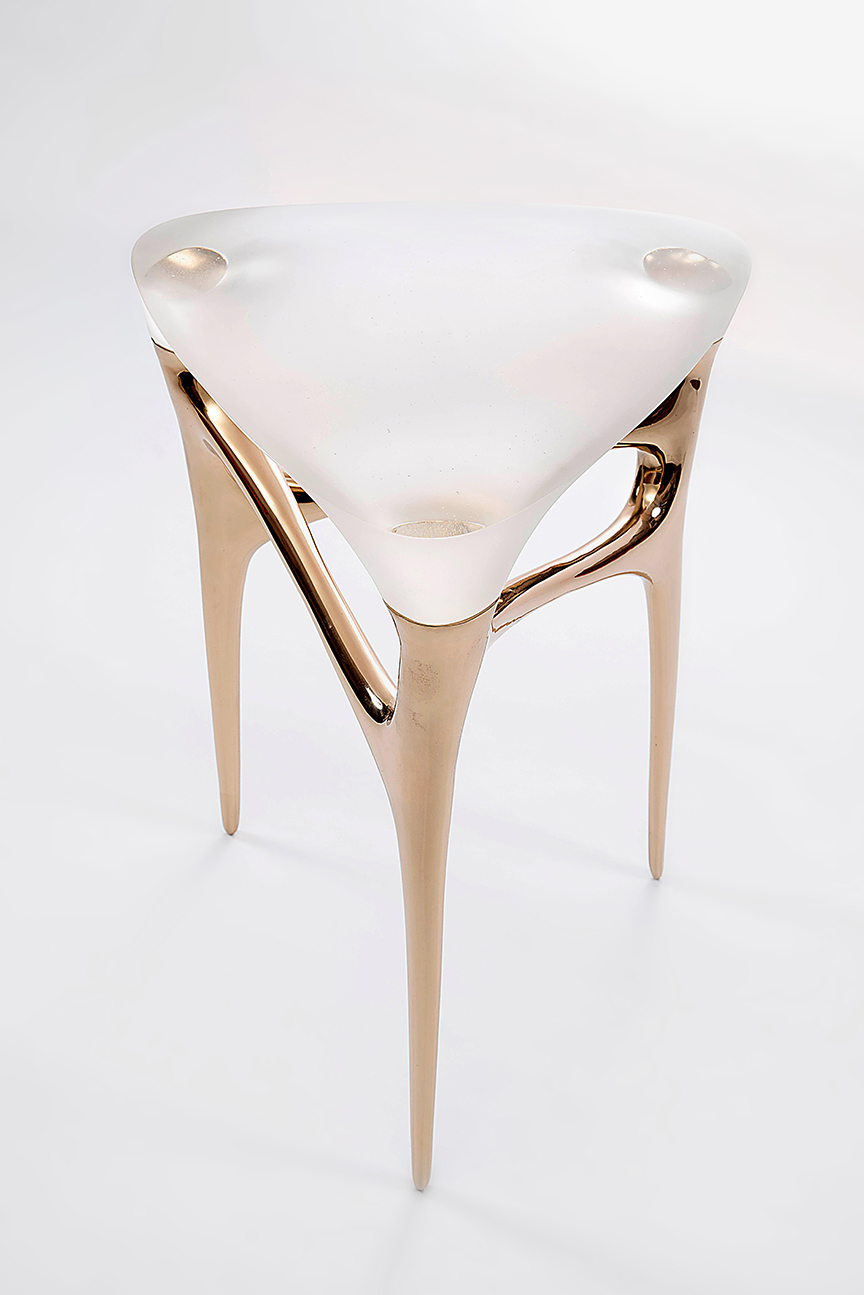
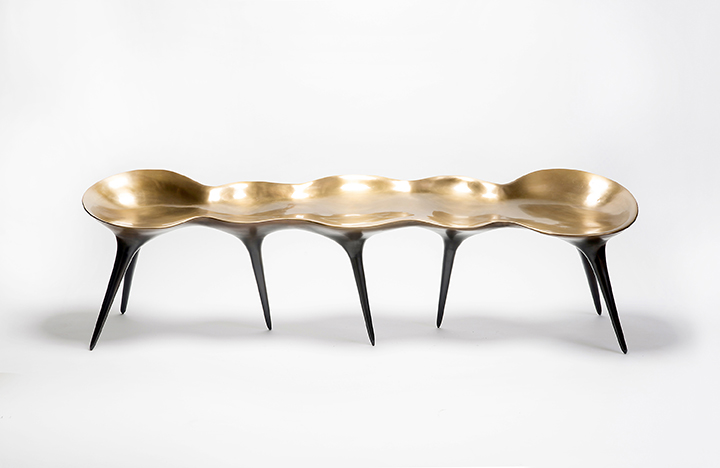
All photos by KeneK Photography, courtesy of Wexler Gallery.

Flowers and botanicals are often viewed as a feminine concept or aesthetic, typically in design or art. Rather then let these concepts define them, female artists in history embraced the idea and contributed some of the greatest examples of botanical art, examples that are according to Marika Meyer, owner/founder of Marika Meyer Interiors and Marika Meyer Textiles, “detailed and accurate, but also beautiful and captivating.” Meyer’s appreciation for these women sparked an interest in botanical art, and then further a collection of fabric called the Flora Collection dedicated to artists in the field.
“The more I explored the history of the botanical art form, the more I learned about the role women played in the field,” Meyer says. “I felt it was important to honor both their contribution to this genre and their amazing artistry in [a] collection.” Meyer then decided, after having already designed collections inspired by her love of antiquities, to challenge herself creatively and to explore another path in textiles.
The collection is composed of three patterns, Matilda, Lilian and Beatrix, after famous female artists. Matilda Smith was a prolific illustrator in the late 19th/early 20th century that created bold, ambitious pieces that reflected her resilience to the craft, as she made some of the largest botanical works of her time.
“Lilian Snelling has been referred to as the most important British botanical artist of the first half of the 20th century,” she notes. “She completed more than 600 works in her career beginning at the Edinburgh Botanic Gardens and later with Kew Gardens.” And while many people don’t realize that in addition to being the author of some of the most beloved children’s stories, Beatrix Potter was also an accomplished artist and illustrator. “Her illustrations were just as whimsical and enchanting. That is why a petite floral seemed the perfect fit,” Meyer says.
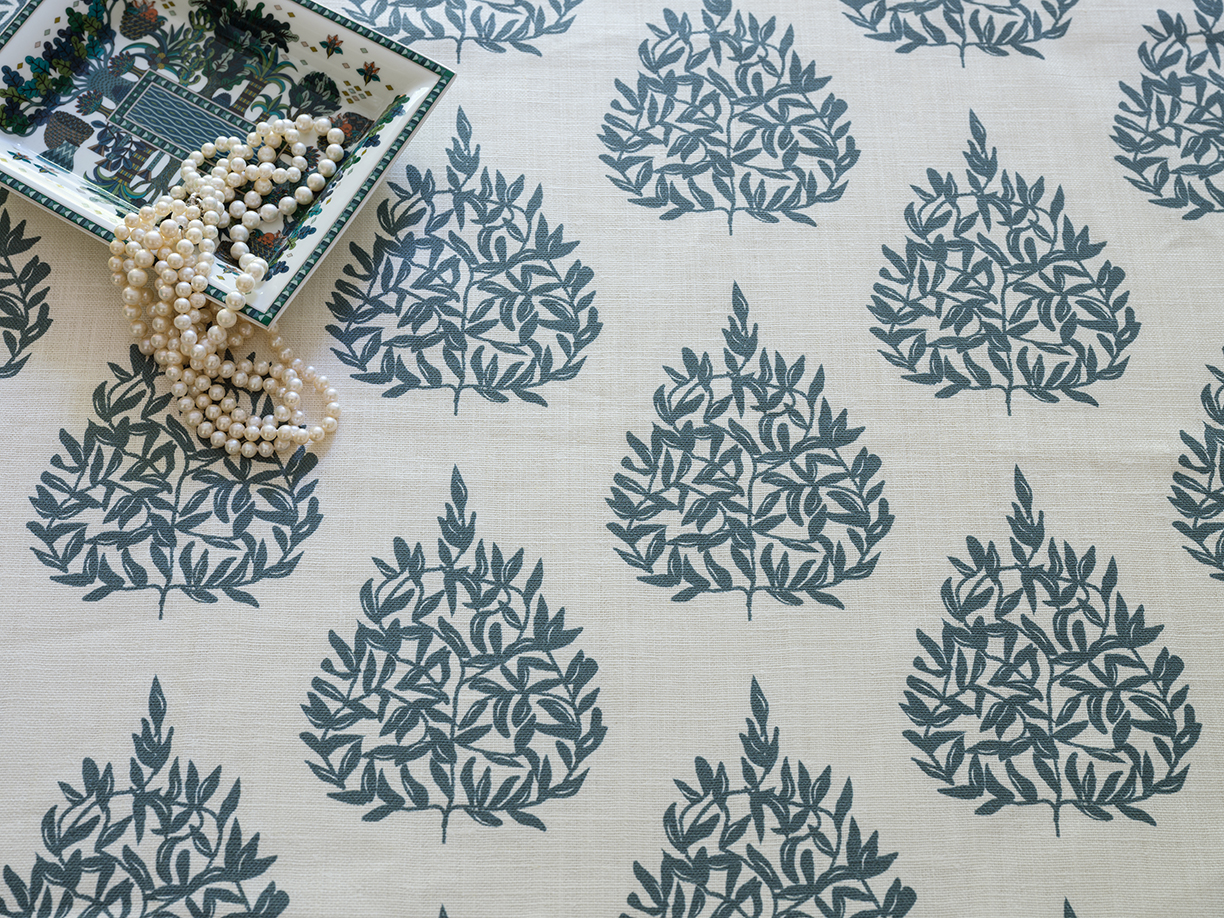
Matilda
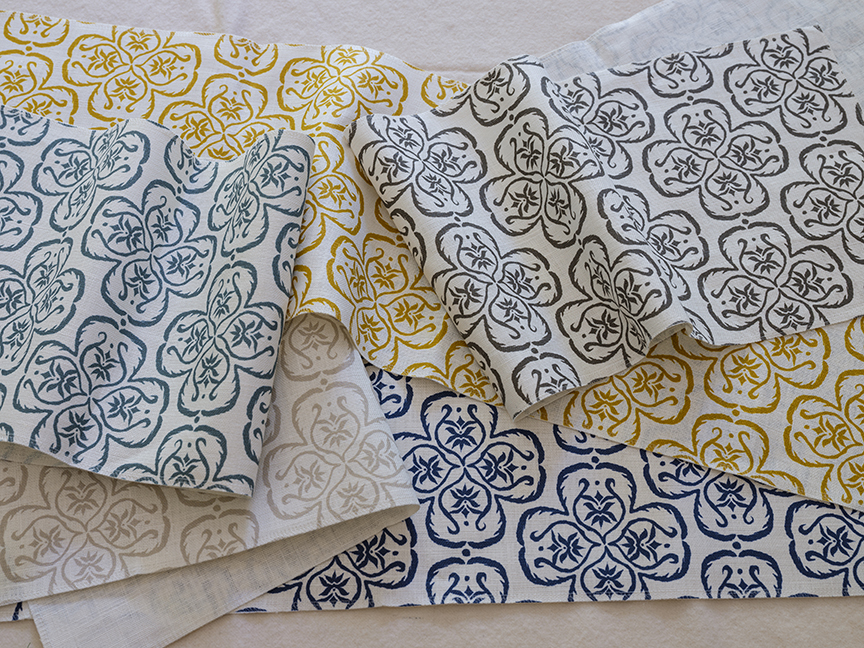
Lilian
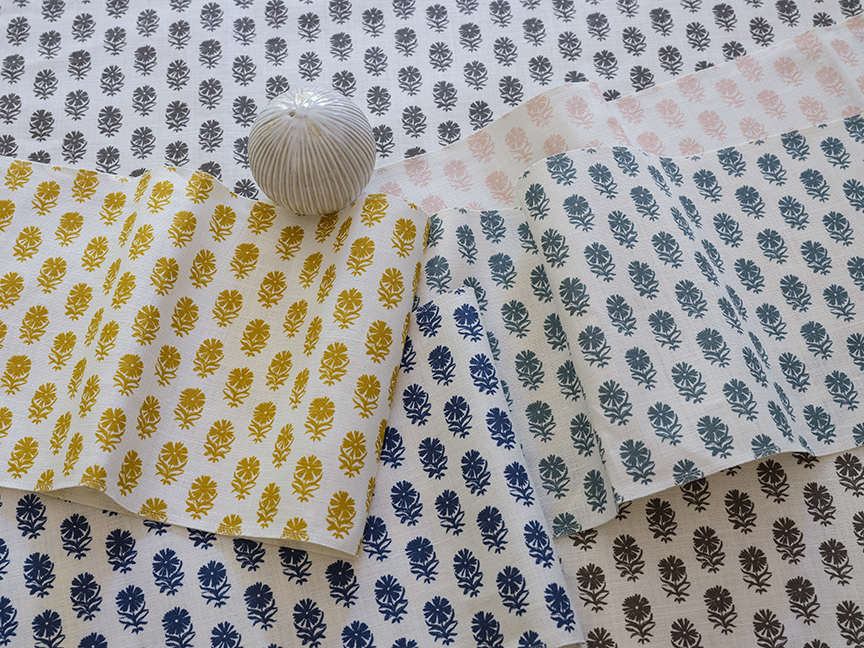
Beatrix
The work that went into the collection came from a passionate, artistic state of mind, as Meyer says she began by free hand sketching designs, leading her eventually the idea of botanical prints because of their universal beauty that transcends time.
“All of my designs are rooted in the elements of art and culture that persist throughout time,” Meyers notes, including the style/design trends of today that inspired warm colors and tones like yellow ochre, warm charcoal brown and steel green.
Ultimately, Meyer says her goal is to always to create designs that can be the foundation for any space. “As an interior designer, fabric is my starting point in any scheme. I often ask myself questions in the design process, ‘Would I use this fabric?’ ‘How would I use it?’ Any of the designs in this collection should be strong enough to act as the jumping off point for a room.” The patterns in this collection are definitely strong options that also offer an interpretation of these artists’ personality, style and significance.
Photos by Angie Seckinger
Artist Concetta Antico sees the world in 100 million colors.
Concetta Antico sits down for lunch at a local cafe, after settling on smoked salmon and a strawberry salad. Before eating, she takes a moment to acknowledge the array of color in front of her: the blue-violet of the salmon, the thousands of reds bouncing around the strawberry and the light turquoise surrounding the seeds. “I promise you, I am not high!” she says, “I just truly see what I am looking at.”
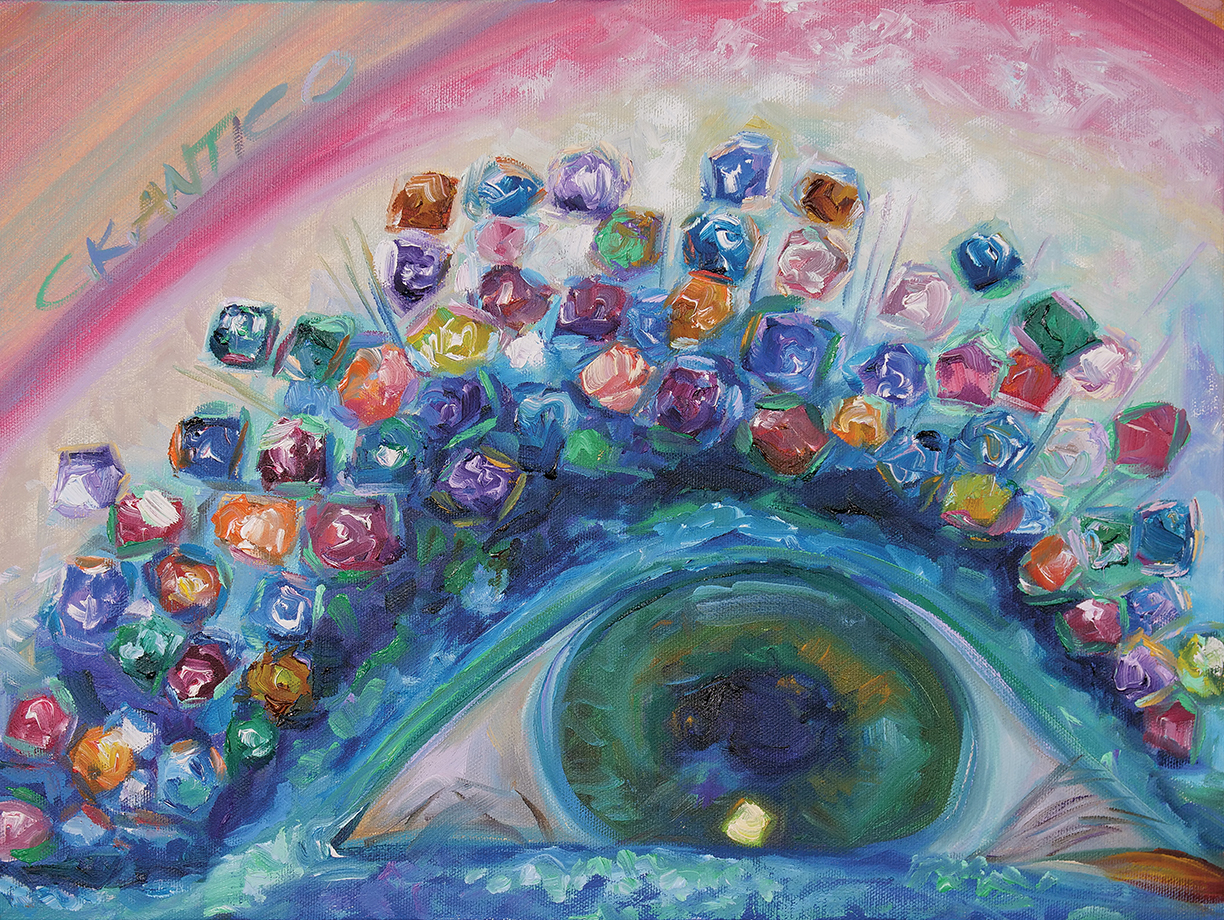
Super Vision Mutation 12 X 16

Persephones Peacock in the Garden of Paradise 8 X 36
Better known as “The Color Queen,” Antico sees pinks, blues and violets in the green grass, an array of colors glistening off the white snow, and hundreds upon hundreds of colors within a rainbow. And they’re not just a figment of her imagination: her rare, genetic gift of heightened sight allows her to see almost 100 million more colors than what meets the average human eye.
In addition to being an artist, teacher, and color consultant, Antico is what scientists call a “tetrachromat,” meaning Antico’s eyes contain a rare genotype that provides a fourth receptor as opposed to the usual three, more common in women than men. With this, Antico’s tetrachromatic potential reaches up to 100 million colors, 10 times more than the average 1 million.
For now, Antico is the only authenticated tetrachromat artist on Earth, with 1,000 internationally acclaimed pieces of art and features in Reader’s Digest, Vogue, New York Magazine, and more.
Antico is originally from Australia, and was drawn toward art and color at a very young age. At age 8, her mother recognized her potential to become a famous artist, constantly showing support for Antico’s art. At age 16, she left home to cope with her mother’s passing, winding up in Los Angeles.
“I am a bit of an adventurer,” she says, “Sydney got too small for me. I was heading to work in Canada, I stopped in L.A., and it entranced me.”
Despite her hardships, she always kept her deep passion for art at the forefront of her life and career. Antico knew she was meant to paint professionally, and so she began teaching in San Diego, ultimately instructing 25,000 budding artists in oil painting.
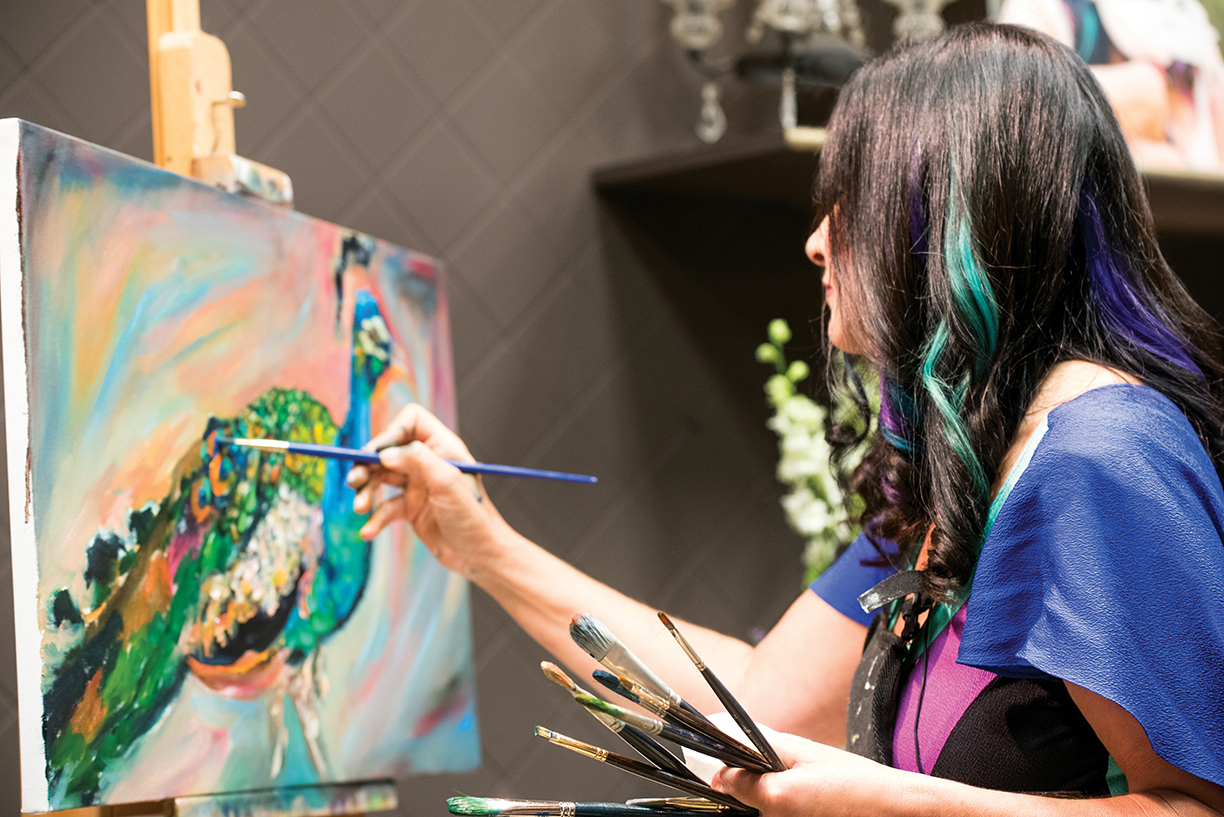
Artist Concetta Antico works on a piece named Iridescent Eyes… Charlie The Peacock 18 X 36
“Oil painting makes you healthier, and if we surround ourselves with beauty and happy spirits, we will be in a constant state of color euphoria.”
While teaching, Antico would point out the colors she sees in everyday objects and receive mixed reactions from her students. She says, “My students would tell me, ‘We don’t see that color that you see!’ I’d be confused, but then I educated my students to see a little more color.”
It wasn’t until a buyer of Antico’s, who happened to be a scientist, realized Antico could be a tetrachromat. Then, she began to understand her ability to see millions of colors. “I always thought I was different and unique,” says Antico. “The way I do things, what compels me, the way I painted … I didn’t realize that I could see and create colors like a computer.”
In late 2012, Antico was evaluated both genetically and behaviorally by Jay Neitz, Ph.D., a world-renowned leader in color vision. She soon discovered she was in fact a tetrachromat, and possessed an incredible genetic gift that affects only 2 to 3 percent of the world’s population.
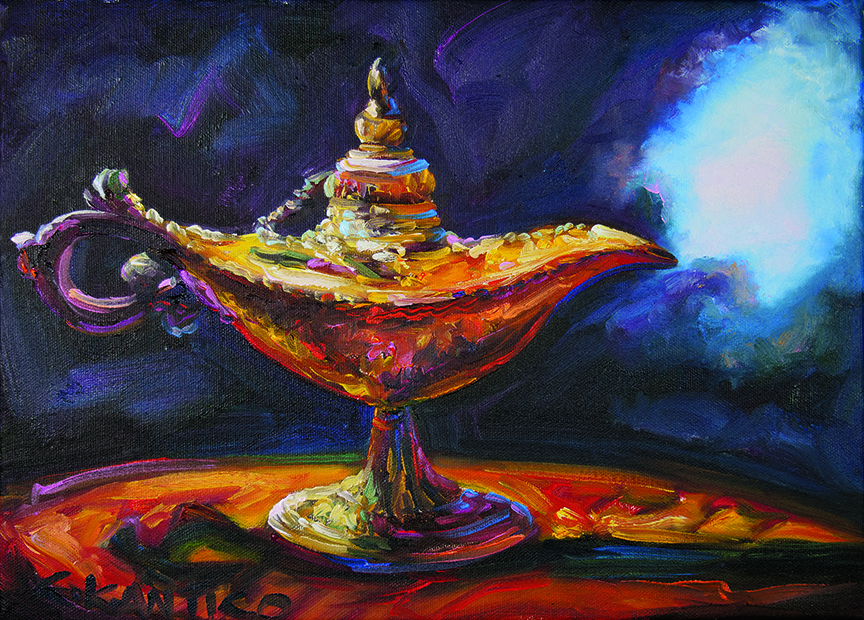
Who’s Your Genie 10 X 14
“It was just another part of the uniqueness of Concetta,” she says. “The gift is made up of my mother, her vision for me, how she put red and blue lights in the swimming pool to make lilac light, my high school that was big on art, my genetics, my brain, and my own passion, ambition and drive.”
Today, Antico wants to use her gift to make the world a better place, truly treasuring the world around her. In an interview with Stanford University, Antico said that, “enhanced color created enhanced joy.” She is constantly happy and joyful, happy to wake up and see trees and sun.
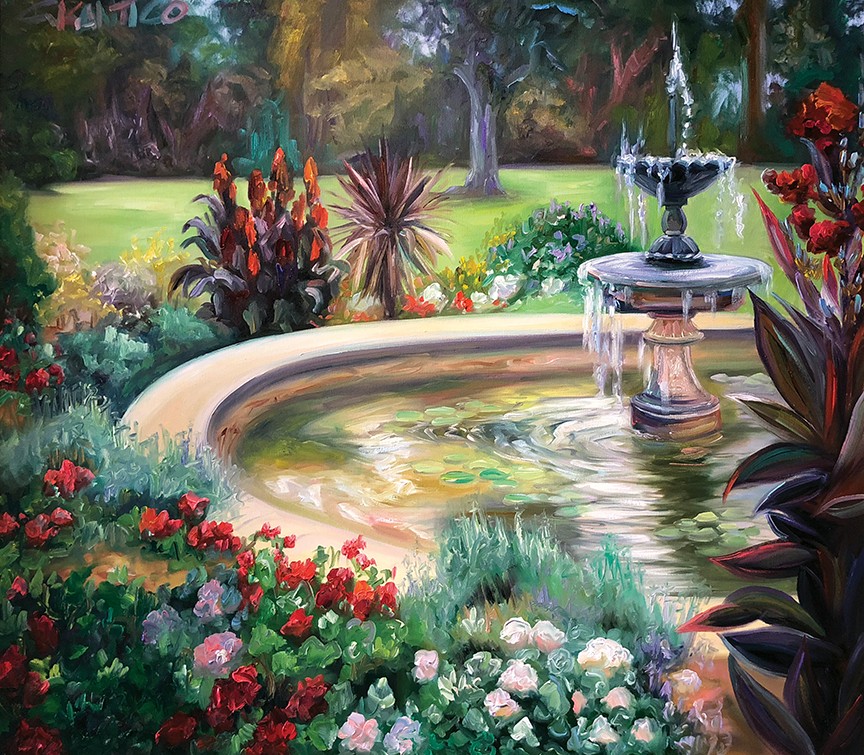
Reflecting Pool of Narcissistic Love-Vaucluse House-Sydney 30 X 36

“Oil painting makes you healthier, and if we surround ourselves with beauty and happy spirits, we will be in a constant state of color euphoria,” she says. “My gift makes me so excited to paint, look, share. Color has made me joyful, and has only enhanced my life. There are no disadvantages to beauty and color.”
Antico has a wide range of muses, as she aims to paint whatever captivates and moves her. Her paintings are divided into two categories: “earthly delights,” which encompasses everything on earth that she paints, and “otherworldly wonders,” which includes galaxies, magic and more. She often leans toward the ethereal subjects such as mystic skies and otherworldly galaxies. “Not people, though. We’re just not that attractive,” she jokes.
For those with normal sight, a place like a grocery store or a highway are simply as they seem. But for Antico, she is able to see past the veil and see further into the typical. “I’m captivated with the sky and trees beyond the freeway. I’m hyper-focused on beauty around me.” Sunsets, for example, are a religious experience for Antico, with the amount of splendor and color that they produce. “I am very blessed. I wake up every day and am so elated to see what I see and do what I do,” she says.
One of Antico’s main beliefs is that everyone has gifts, not just her, and that they should all be used to better our world. “Media can be dark, and we need light,” she says. “I want to use my platform for that. I have a place as ‘The Color Queen,’ and I feel that I can make people see their worlds differently.”

Conjuring Crystal Ball Colors 18 X 24
SMEG and Dolce & Gabbana — two prominent brands in the world of luxury — have come together and taken kitchen appliances to a whole new level.
Fun, vibrant, unique and sure to start a conversation are just a few ways to describe the new special collection, titled “Sicily is my love.” The line includes coffee makers, hand blenders, toasters, citrus juicers, electric kettles and mixers, and more.
Dolce & Gabbana and SMEG continue the journey that joins their artistic sensibilities to discover the colors and beauty of Sicily to celebrate the authentically ‘Made in Italy’ project under the shared standard of creativity, art, and design. A revolutionary collaboration that has created a new perception of home appliance, no longer mere products, but true works of art.

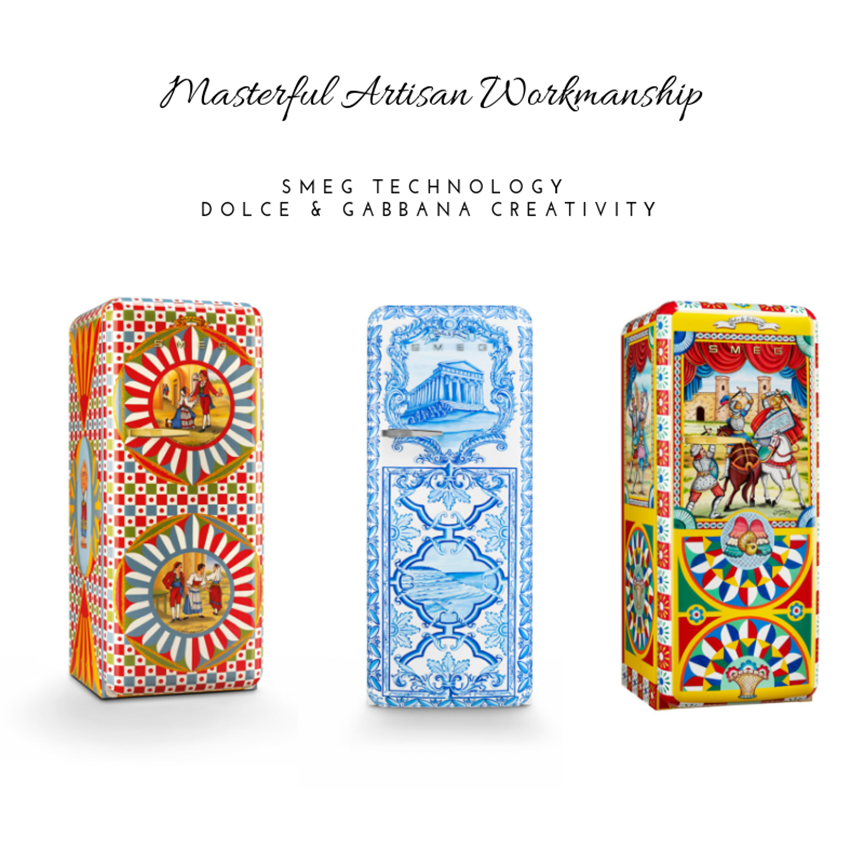
Photos courtesy of SMEG and Dolce & Gabbana
Partnering with icons from the design and architecture industry, CITCO — an Italian stone company — has created an impressive home and office collection.
Created in 1990, CITCO continues to reimagine the perception of marble with revolutionary partnerships alongside Zaha Hadid Design, Ora ïto, Daniel Libeskind and Arik Levy.
Zaha Hadid Design
Zaha Hadid Design presents the Malea Coffee Table, with the idea of a spiraling seashell at the heart of the design. Despite being carved from a block of onyx, the table appears malleable with sweeping lines and fluid shape. The transparent acrylic material that is paired with the onyx adds to the complexity of the piece.
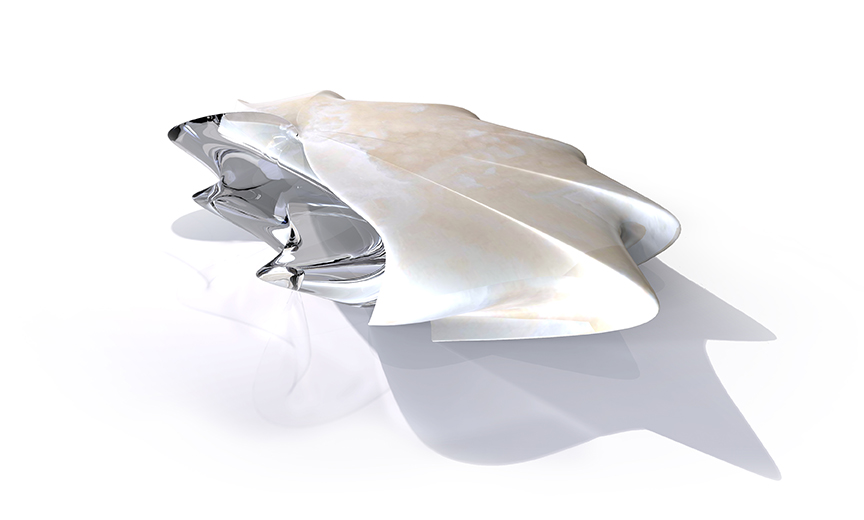
Ora ïto
The Isa Coffee Table, designed by Ora ïto, also has a sculptural look with bold and curving lines that draw the eye. The table is reminiscent of a table designed by Isamu Noguchi in 1947, but with a clear sense of the new designer.
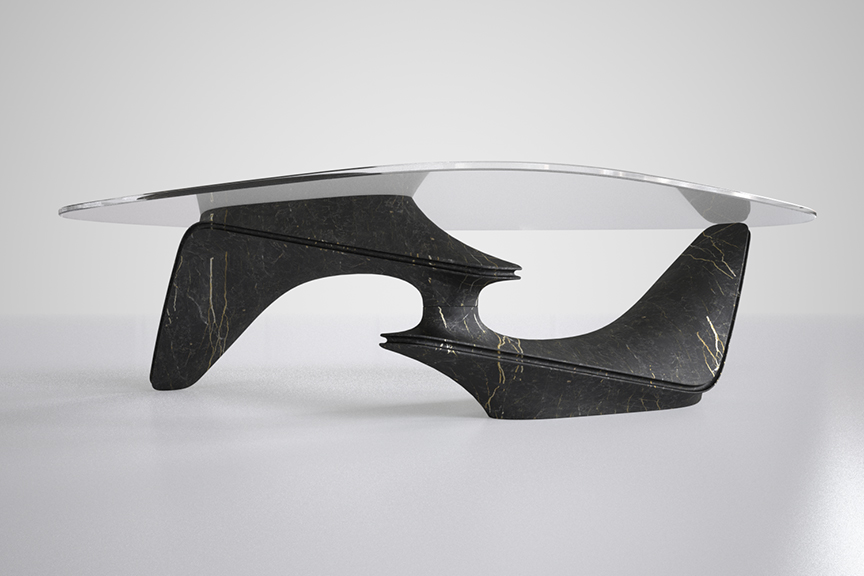
Arik Levy
Arik Levy brings us Negative Spaces, a new series of vases that are available in three different shapes and sizes. With the impression that the pieces have movement, the vases work together to create an energy and depth. The materials are semi-polished Onice Cappuccino, capturing a sense of warmth in nature.
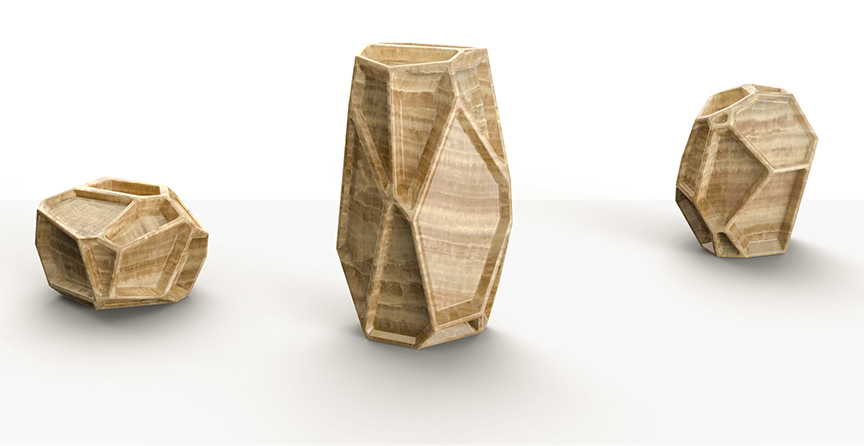
Daniel Libeskind
Using sculpture as inspiration for furniture, Daniel Libeskind reveals his Endless Side Table. The piece plays with perception and is multi-functional, quenching the thirst for art and function. A unique viewpoint and manipulation of space, light, and lines have brought a three-dimensional spiral into the home and office space.
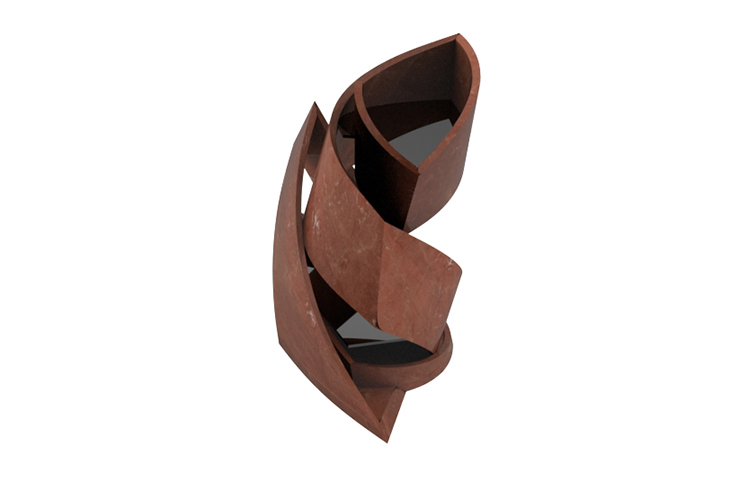
Photos courtesy of www.citco.it



